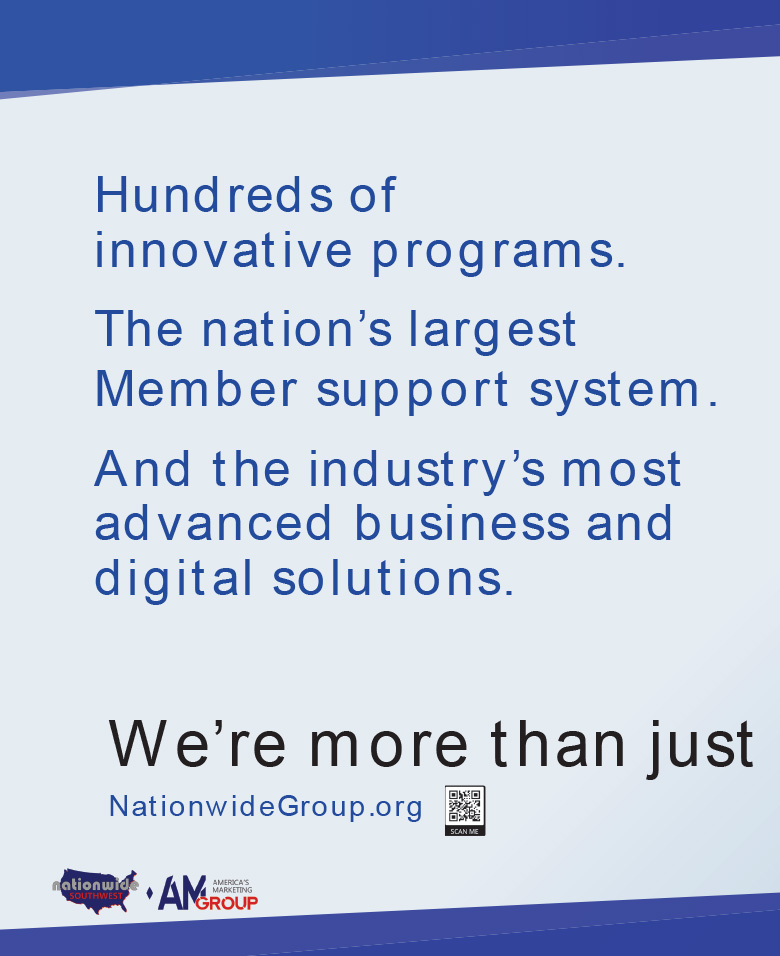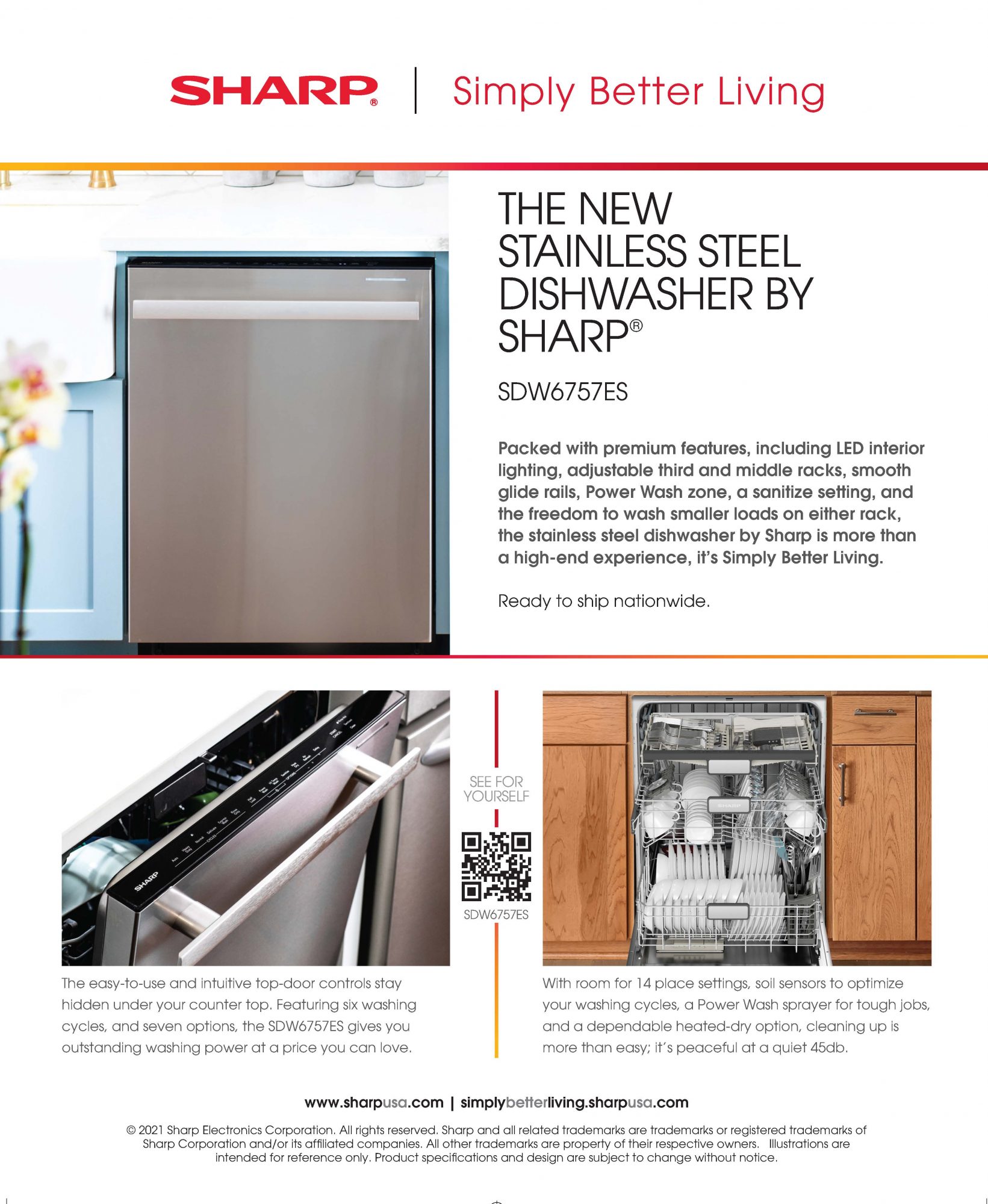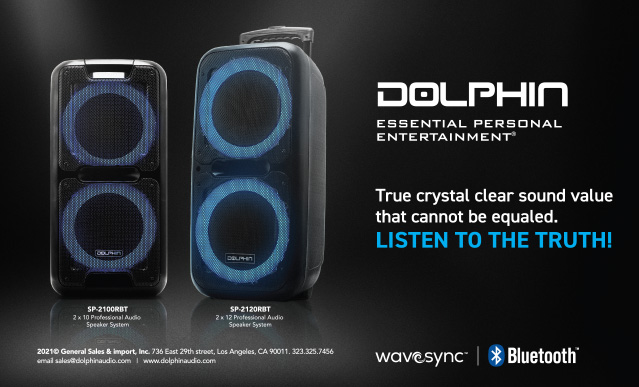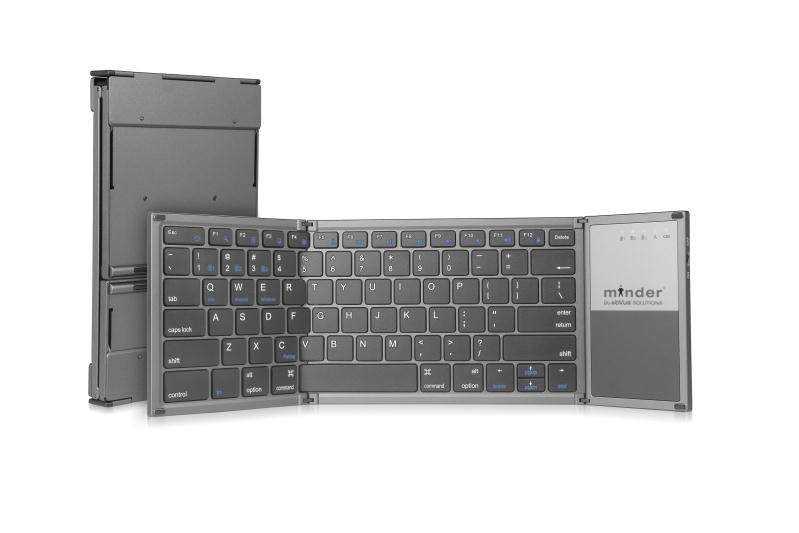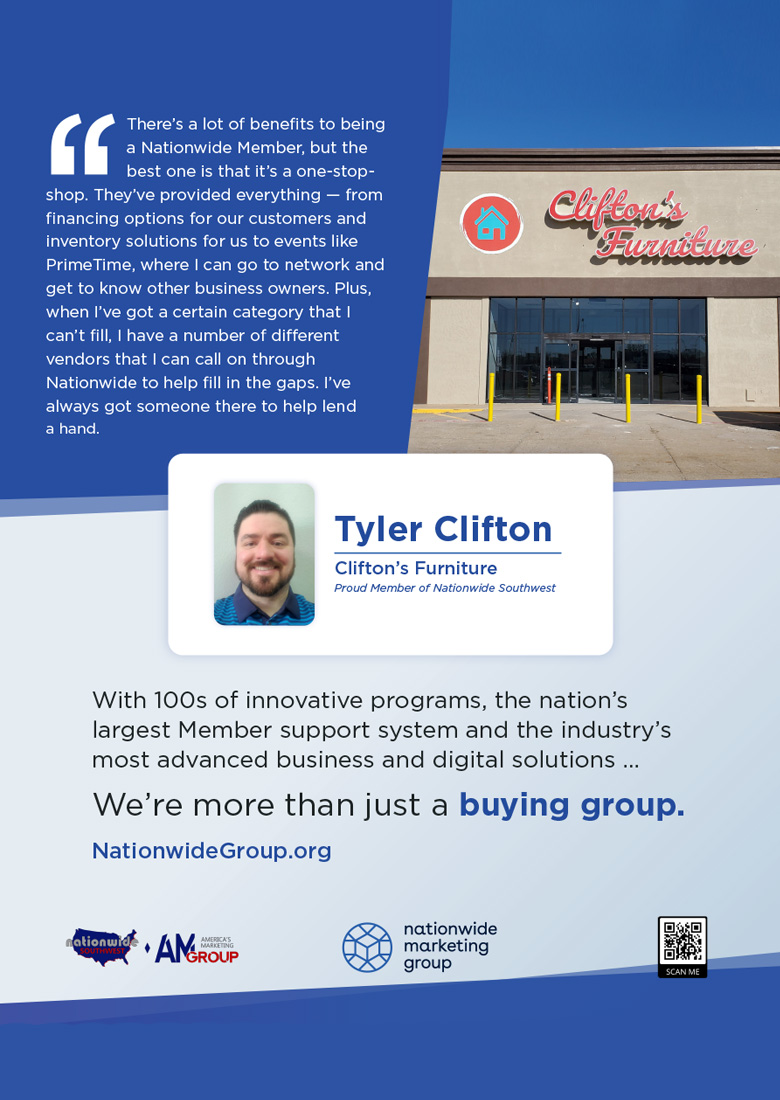In this issue, we focus on the rise of electric vehicles and what that means for the CE retailers. With new infrastructure plans to help fund charging stations across the country -- and more consumers needing to juice up their EVs -- is it time to invest in charging spots at stores and shopping centers? Or do you just need to be selling home chargers? We look at the pros and cons of doing this sooner rather than later. Plus, the latest in home audio, the return of film cameras, and the niftiest tech toys to watch for this year.

On the Go
I live in the Sunnyside section of Long Island City in NYC. We have a wonderful, diverse neighborhood, with bikes lanes all over our streets. On a normal day, I see multiple forms of mobility. From e-bikes, to e-scooters, even to electric unicycles – the way we move around has changed, and has enhanced our daily lives. Use cases run the gamut from the Grub Hub delivery personnel on these electric vehicles to Waymo’s self-driving ride-hailing service in Phoenix. Pretty remarkable.
In our April issue, we examine mobility from all angles, and look at EV chargers as well. With a big nod to Earth Day on April 22nd, our issue covers the key factors of energy management, a review of sustainable appliances and an eco-product roundup, and we have a notable feature themed, “What CE retailers can learn about sustainability from wireless companies.”
Make sure to check out the latest trends in Home Audio, the latest in webcams, our new Unboxed review, and much more.
We also do a recap of multiple shows that our industry has successively held in the last few months. It has been great to travel and see our clients and readers on the road. I am hopeful that we are making lasting progress in ending this pandemic.
If you have not done so, please make sure you get our multiple versions of Dealerscope every month – the digital issues can be subscribed here— and while you’re commuting to celebrate mobility, listen to our Audio Version of Dealerscope at (we update this every month).
As always, any comments and/or questions – please contact me at tmonteleone@ctlab.media – our great team would love to hear from you!
Tony Monteleone,
Group Publisher of CT Lab Global Media

A WORD FROM OUR EDITOR IN CHIEF
Facing Off With Fossil Fuels:
Electric Vehicles
Are Here To Stay

The barrage of high-profile ads during Super Bowl LVI for EVs from BMW, General Motors, Kia, Nissan, and Polestar – not to mention EV chargers from Wallbox – were widely considered to herald the mainstream debut of fuel-cell vehicles in January. But flash forward one month and rising gas prices – particularly ever since the war in Ukraine got going – may ultimately sound the death knell for the era of fossil fuels. With crude oil prices at their highest since 2008 and the resulting gas prices, at press time, around $7 a gallon in California, it’s hard not to wonder what that eventually adds to the cost of everything from shipping and deliveries to shopper trips to the mall. Of course, gas prices go up and down all the time, but with EVs on the rise anyway, they may add an extra incentive in the electric direction.
And, of course, sustainability continues to be a driver of sales for electric vehicles, with 43 percent of Gen Z consumers saying the U.S. should phase out fossil fuels and 57 percent of Millennials in favor of phasing out new gas cars, according to GfK. The same research found that 60 percent of all those surveyed (including Gen Z and Baby Boomers) expect their primary vehicle to be an electric one within the next six years. It also found that electric vehicles will make up 20 percent of the auto sales market in that same time frame.
That’s why it’s time for us to focus on e-mobility as a topic for this month’s issue of Dealerscope, particularly as it applies to retailers. On a recent episode of the always fair-minded Brian Lehrer Show on New York’s WNYC, EV owners were invited to call in. One caller explained how she always stops at a shopping center on Long Island to charge her Tesla and visits the unique mix of stores there while she waits. As Blink President Brendan Jones told writer John Quain in his story about EV chargers in the retail context on page 28, rapid chargers can now juice up in as little as 30 minutes, which is a found 30 minutes a consumer can spend shopping in-store. Not a bad prospect in this era of online shopping supremacy. Considering that EV sales jumped 72 percent in 2021 – and many state and federal subsidies still in effect to keep that juggernaut fueled – retailers must start to seriously consider the opportunities that EV chargers in retail locations offer.
On the supply chain side, the rising cost of delivery may well speed up the burgeoning electric truck and van market, which was on display earlier this year at CES. GM’s BrightDrop announced agreements to supply both Walmart and FedEx with its electric delivery vehicles, while Amazon announced a deal to add Stellantis’s electric Ram ProMaster to its EV delivery fleet (which also includes EV vans from Rivian).
Sustainability in and of itself may not have been a huge driver of EV sales in the past. However, the current rising price of gas – and the tragic, violent, and horrific reasons why that price is currently rising — will certainly shock many into exploring the next generation of technologies that make them less dependent not only on oil, but also on those who use this finite resource to wield power.

Tom Samiljan
GREEN GADGETS
Green Gadgets for 2022
Recycled materials, sustainable packaging, and energy efficiency are just some of the features in this year’s crop of sustainable electronics.
By STEPHEN SILVER
Sustainability, efficiency, and green have been watchwords in the industry for many years, more so than ever with a slew of new products unveiled at CES in January. Here are some of the more promising or appealing ones, many of which are hitting the market already and will continue to do so throughout the year.

Super73 and Indian Motorcycle’s
eFTR Hooligan 1.2 Electric Bicycle
The e-bike brand Super73 and Indian Motorcycle in early March teamed up to announce the eFTR Hooligan 1.2 which, the companies said, “combines a trusted electric powertrain from SUPER73 with moto-inspired styling from Indian Motorcycle.” That product is set to arrive in the spring. Super73 late last year had announced a new e-bike battery-recycling program, along with PeopleForBikes and Call2Recycle.
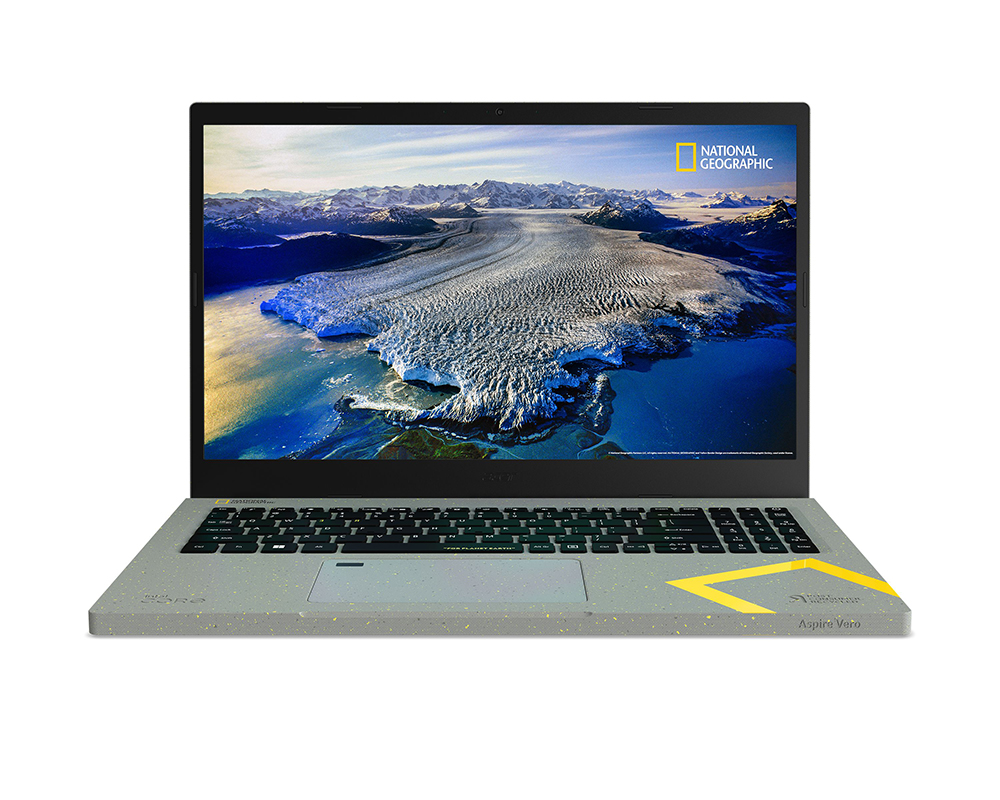
Acer Aspire Vero
National Geographic Edition
Among Acer’s lineup of laptops this year is this special edition of its Vero product, which is made from 100 percent post-consumer recycled plastic. Plus, every purchase of the laptop helps to support the National Geographic Society, which promotes conservation and science education (in addition to publishing a great magazine).
Lenovo Yoga 6
Lenovo’s Yoga line is marking its 10th anniversary this year with the launch of a new line of laptops. The company says that the Yoga 6, a 13-inch convertible laptop, is “inspired by all the ways we make choices in our daily lives that affect the environment.” It comes in a dark teal color that is made with recycled materials, which includes a cover from recycled materials and battery cells, 25 percent of which come from post-consumption plastic. In addition, the product ships in sustainable paper packaging from “responsibly managed and FSC-certified forests.”

Beko BioCycle Refrigerator
Beko has announced an eco-friendly product line for 2022, and part of that is the BioCycle Refrigerator, which strives for sustainability using materials that are natural and renewable.
The BioCycle Refrigerator sports durable components in different parts. For instance, its fan cover is 100 percent bio-based plastics — coming from such sustainable resources as corn starch and sugarcane — and its door seal is 25 percent bio-based, from soybean oils. Even the two egg trays in the refrigerator are derived from eggshell wastes, as well as bioplastics.

LG StanbyME
LG, like most major companies, emphasized sustainability at CES, and one of those products was the LG StanbyME, described by the company as a “wireless private mobile wireless display” that can go in any room in the house while functioning as a TV. It’s a rare TV that comes with a built-in battery, which would likely use less power than a thicker, plugged-in TV.
Samsung Eco Remote
Samsung, too, promised a “sustainable, customized and connected future” at CES, and part of that message was evidenced with the latest Eco Remote, which can charge wirelessly by extracting power from your Wi-Fi router’s radio waves. Other eco-friendly options include solar-powered charging.

BodyGuardz’s Pure 3
BodyGuardz’s latest glass screen protector is the first such product to carry the Green Product Mark certification from TÜV Rheinland. That award was earned thanks to the glass being made from 30-percent recycled glass, as well as its use of soy-based inks and recyclable packaging and installation tools. The Pure 3 protector, the company says, is “five times stronger” than a phone screen alone, featuring what it calls a proprietary blend of glass.
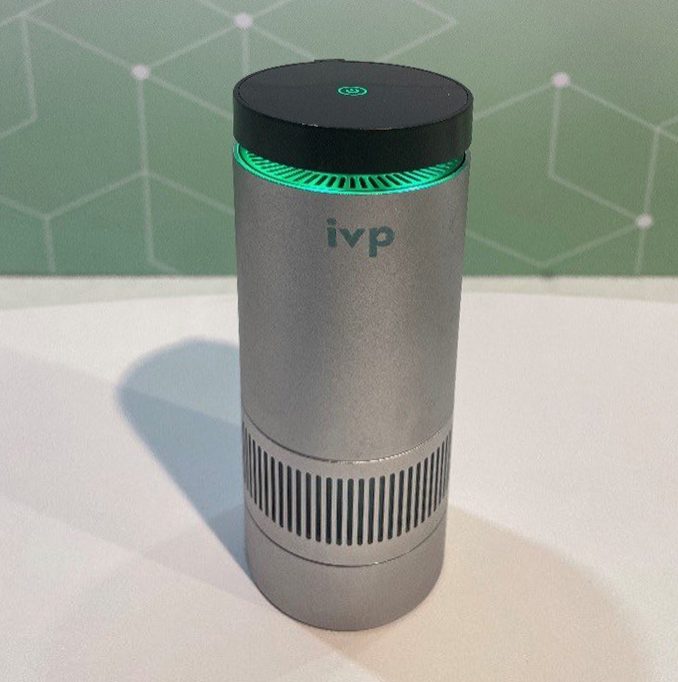
IVP Personal Air Filtration Unit
Integrated Viral Protection, LLC’s new Personal Air Filtration Unit, is being marketed as “catch and kill” for COVID-19 — supplementing the vaccine — as well as for “anthrax spores, bacteria, allergens, and other asthma triggers.” It’s meant for schools, offices, transit, and other indoor places, meant to promote cleaner air and less airborne disease.

HOME AUDIO
Home Audio Comes Alive
From home theater to hi-res, 2022 is shaping up to be a great year to be immersed in better sound all around.
By MIKE KOBRIN
After two years of lockdowns and restrictions, it’s no surprise that people are still trending towards spending more time at home in front of the TV. According to NPD, sales revenue for the U.S. home theater market, which collectively includes TVs, soundbars, receivers, amplifiers, and home theater speakers, increased 18 percent in 2020 and 7.5 percent in 2021. “My opinion is that demand for TVs drove this entire segment of the market, with consumers spending more time at home and more time streaming video content,” said NPD Executive Director, Industry Analyst Ben Arnold, in an interview with Dealerscope. The big boom happened in the initial year of the pandemic, but there’s still growth thanks to new innovations in audio technology and connectivity.
In 2022, consumers want their home theater experience to be immersive and wireless, and they want it to sound absolutely fabulous. Recent advances in sound processing mean home audio systems can recreate live or theatrical experiences in more convincing detail than ever before. And Bluetooth is rapidly evolving via a host of major updates over the past two years, making it possible to integrate the wireless technology more fully into home setups without skimping on sound. Device compatibility and audio quality still vary as these updates make their way into the manufacturing stream.
Hi-res streaming services have also come directly to home audio components like receivers, soundbars, and speakers via digital processors, built-in Wi-Fi, and digital-to-analog converters (DACs). This provides a great alternative to sending wireless audio from mobile devices to home setups, which can be a bit complicated since hi-res streaming audio resolutions from companies such as Apple and Amazon have outpaced the ability of Bluetooth, and even Apple’s AirPlay, to transmit them without losing fidelity. Ultimately, the question is whether consumers want to stream hi-res content from their mobile device to their home audio system, or whether they want to control their home system’s streaming functions via either a mobile device or a dedicated remote. Current technology favors the latter, but the line will certainly continue to blur in 2022 as wireless continues to evolve.
Here are some of the latest trends in home audio.
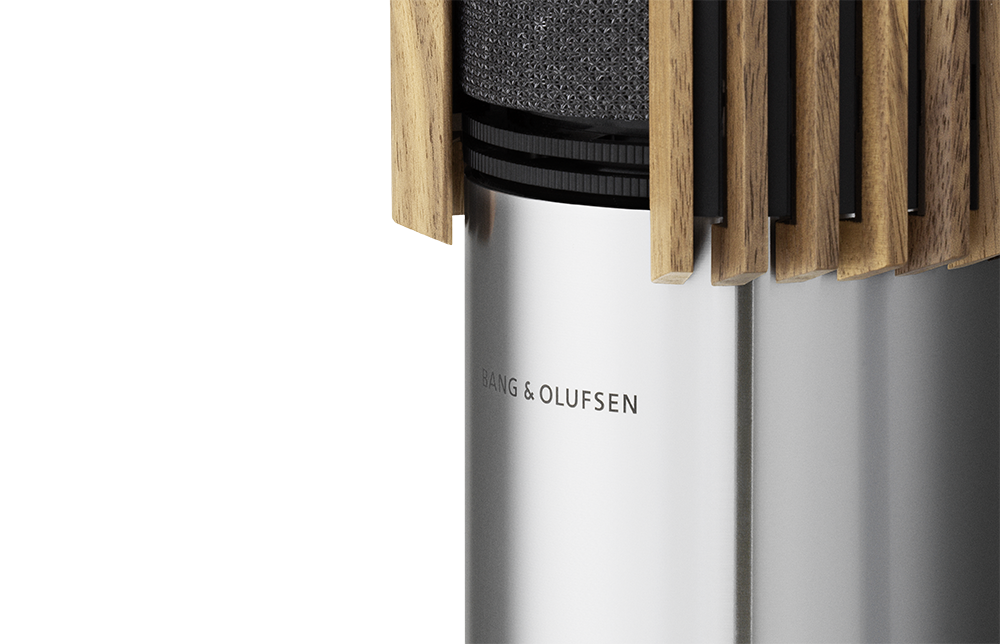
Beolab 28 Floorstanding Speaker
Immersion
3D audio platforms such as Dolby Atmos and Dirac Live Sound are going mainstream, adding a vertical dimension to home theater sound via height channels. Compatible A/V receivers like the Marantz 40n (Atmos) and the Onkyo TX-NR7100 (Dirac Live) can send that height info to upward-firing speakers that bounce sounds off your ceiling so you feel as though you’re in the middle of the action. Both technologies can also work without height speakers, though the effect is less immersive. As a compromise, some companies such as Polk Audio offer height add-ons for existing floorstanding speakers like the Monitor XT70. The new 7.1.5-channel LG S95QR soundbar has five height speakers built in. Atmos currently has far more hardware support, especially among speakers, though Dirac does have an impressive list of high-end receiver partners including Arcam and NAD.
Immersive alternatives to DSP wizardry include Sony’s latest Bravia XRA95K TV, which incorporates a screen that doubles as a center-channel speaker, as well as a spatial sound personalizer that incorporates a neck-mounted speaker system. And for folks who want to listen to immersive content on their desktop without bothering others in their home, forward-looking products such as Noveto’s forthcoming N1 speaker uses beamforming tech, so only the user sitting in the sweet spot will hear 3D audio at full volume. Cool stuff for sure, and we can see a use case for people who just don’t want to wear headphones for hours on end – but also a little bit on the gimmicky side.

Marantz Model 40n A/V Receiver
Wireless Connectivity
Significant advances in the Bluetooth wireless protocol happened during the pandemic, and as manufacturers catch up with the evolving standard, the home audio market is exploding with better-quality and more versatile wireless audio. Smaller speakers like JBL’s Boombox 3 and Monster’s DNA Max offer the ability to connect to multiple devices simultaneously and wirelessly daisy-chain multiple speakers into a single system. Higher-end one-piece speakers like Astell & Kern’s Acro BE100, the first Bluetooth speaker to support both the aptX HD and LDAC codecs, offer incredible wireless sound for their size. All of the soundbars introduced at CES 2022 offer Bluetooth and at least one other form of wireless connectivity. At the very high end, Bang & Olufsen’s Beolab 28 floorstanding speakers have a swappable wireless connectivity component so you can upgrade as tech evolves.
Sales of wireless-equipped A/V receivers are up 13 percent in 2021 over the previous year, according to NPD, making them the fastest-growing segment of the wireless home audio market. These generally include Bluetooth as well, so connecting wireless-enabled components like Cambridge Audio’s Alva TT V2 turntable is easy and sounds excellent to all but the most finicky ears. Other wireless protocols like Apple’s AirPlay 2, Google Chromecast, and Spotify Connect coexist with Bluetooth in many devices; they add flexibility for mobile devices but require a Wi-Fi connection.
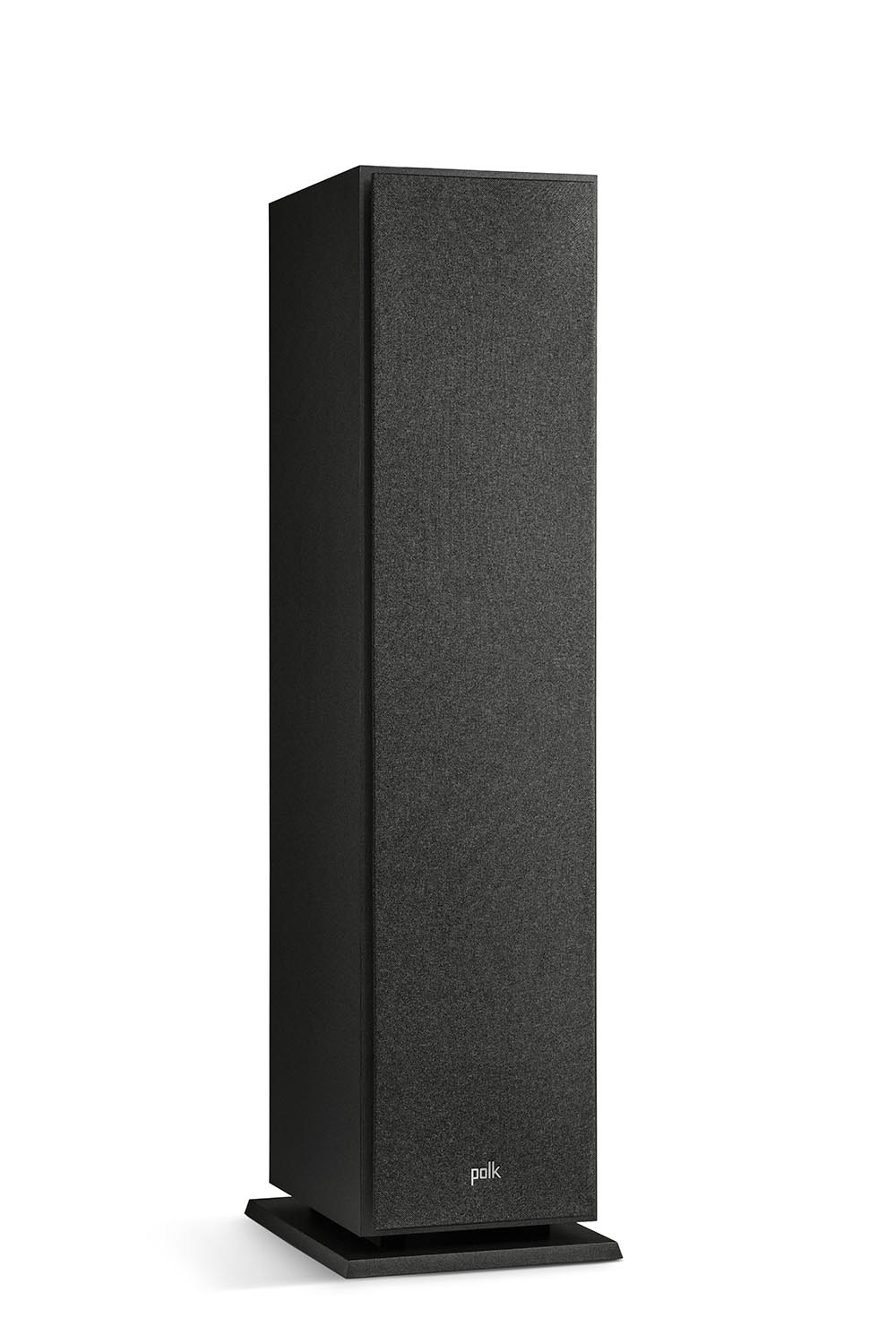
Polk MXT70 Studio Tower
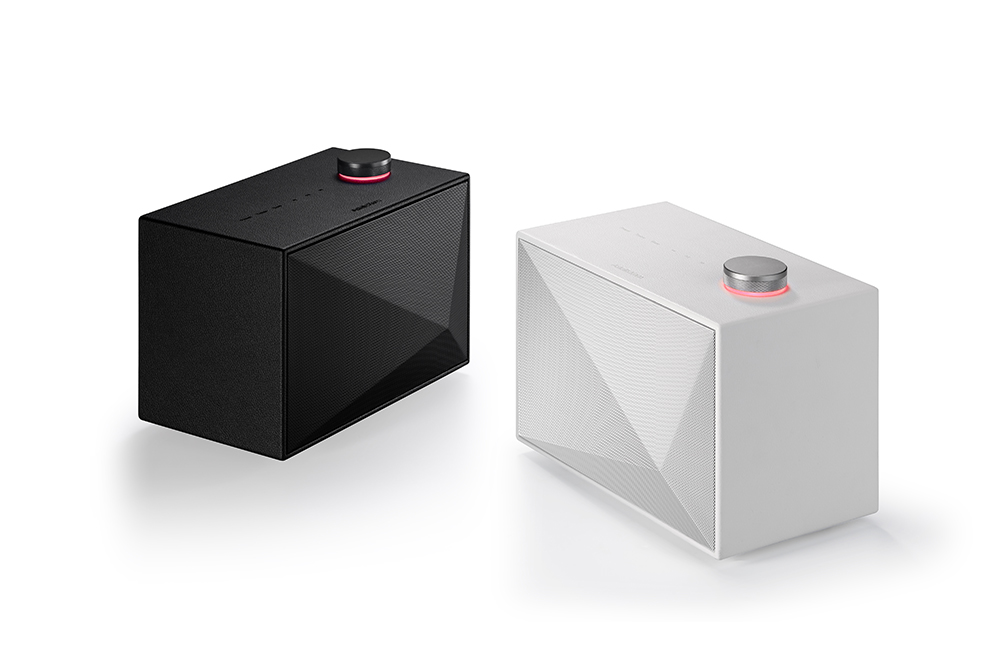
Astell & Kern Acro BE100 Bluetooth Speaker
Hi-Res Audio Support
Streaming services like Apple Music, Amazon HD, and Tidal are pumping out some pretty impressive sound quality, with hi-res audio resolutions up to 24-bit/192kHz. That outpaces what most flavors of Bluetooth can currently handle, making it difficult to stream from a mobile device to a home audio system. But more home audio products like the Marantz 40n stereo amplifier, JBL’s 4305p powered speakers, and Astell & Kern’s Acro CA1000 headphone amplifier include an onboard DAC and Wi-Fi for direct access to these hi-res services.
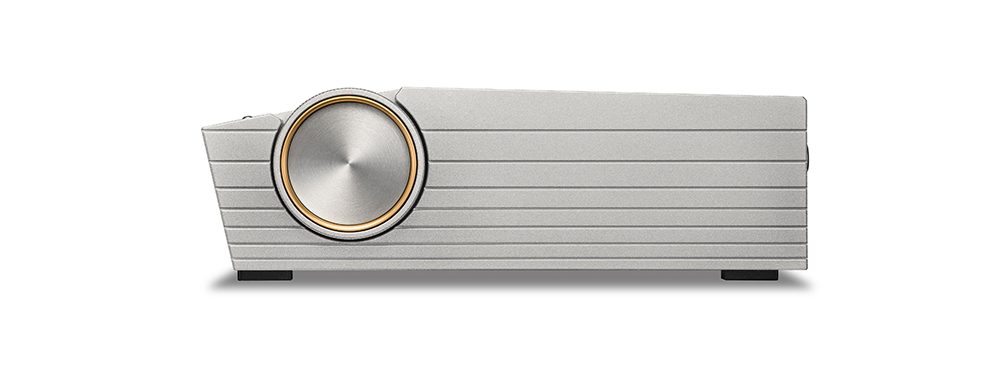
Astell & Kern Acro CA1000 Portable Headphone Amplifier
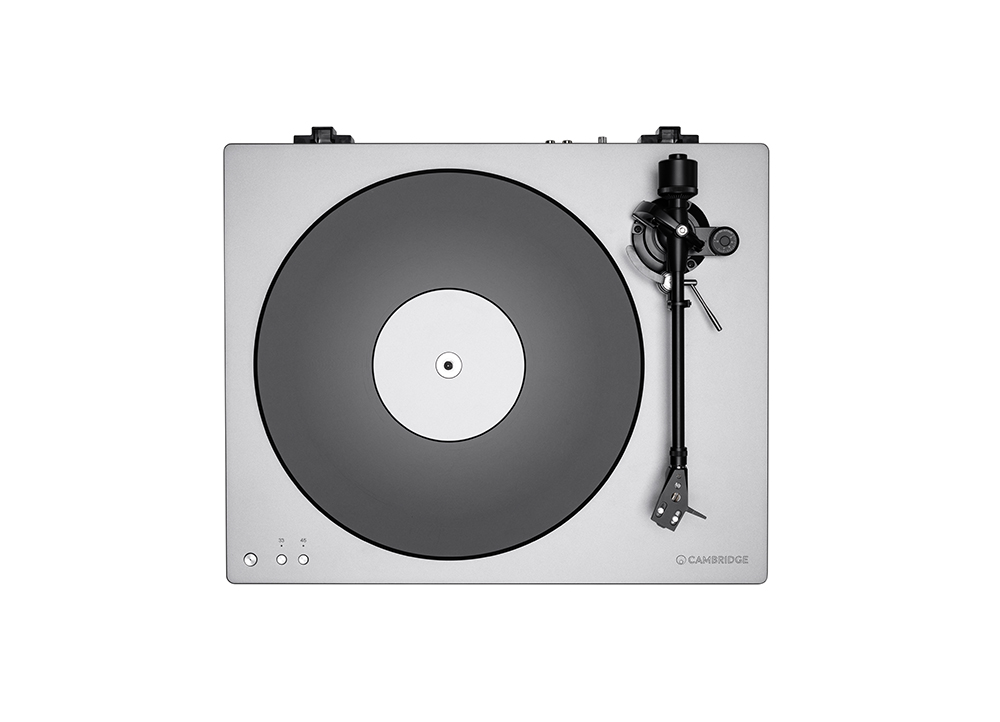
Cambridge Audio Alva TT V2 turntable
SUMMARY:
- The TV segment continues to grow, which means consumers are looking to take advantage of advances in sound processing and wireless connectivity.
- Built-in speakers, soundbars, and home theater systems offer more immersive sound, while wireless-enabled A/V receivers are the fastest-growing segment of the home theater market.
- Several streaming music services are pumping out hi-res audio, but this is more than most wireless Bluetooth sound systems can handle.

CE RETAIL TECHNOLOGY
April 2022 CE News

Protesters Shut Down Major Trade Channel from U.S. to
Canada | The Ambassador Bridge, which accounts for roughly 25 percent of the total trade between the U.S. and Canada, was shut down by members of the “Freedom Convoy” movement for six days in February. Since it disrupted an estimated $360 million in goods that every day travels across the bridge, which connects Detroit, MI with Windsor, Ontario, in Canada, the shutdown is estimated to have cost $2.16 billion..
Biden Administration Seeks to Create Alternative Fuel Corridor | In February, the Biden Administration unveiled a $5 billion plan, the National Electric Vehicle Infrastructure Formula Program, to help states build half a million charging stations by the year 2030. The purpose of the funding is to create an alternative fuel corridor that stretches across the country. To support this effort, President Biden has announced the creation of the Joint Office of Energy and Transportation.


Apple Unveils Plethora of New Products | Last month, Apple released updated versions of several of its product lines, including the Mac Studio and Studio Display desktop, the iPhone SE, the iPad Air, and the M1 Ultra chip. The mid-priced 2022 iPhone SE features 5G, an A15 Bionic chip, and an updated camera. And, the Mac Studio is 80 percent faster than its predecessor thanks to its new M1 Ultra chip, which interconnects the die of two M1 Max chips resulting in a whopping 114 billion transistors.
Retailers Turning to Facial Recognition to Catch Thieves | According to the Retail Industry Leaders Association (RILA) and the Buy Safe America Coalition, as much as $69 billion, or 1.5 percent of total retail sales, were lost to theft in the past year. To combat the coordinated thefts, some large retailers such as Macy’s and Bloomingdale’s are quietly turning to controversial facial recognition technologies to help them catch repeat offenders.


Yelp Fights Back Against Review Bombers | According to recent data released by Yelp, the online forum company had to take down 161 percent more reviews regarding COVID-19 content in 2021 than it had to in 2020. The 15,500 review takedowns come as the company fights back against “review bombers” who are angry that a particular business is following public health requirements such as mandating masks and checking vaccine cards.
APPLIANCES
Appliances that Make You –
and the Earth – Healthier
Go green with today’s eco-friendly
(and super-smart) appliances.
BY ERINN LOUCKS
Sustainability is increasingly top of mind for many consumers, so companies are starting to up their green game and releasing appliances that are better for the earth in ways that range from energy-saving features, to packaging, to earth-friendly materials. After all, appliances are one of the biggest energy users of the household, ranking just behind air conditioning and water heating. With the right appliance, a homeowner can not only work more effectively in their space but can also feel good about being kind to the environment.
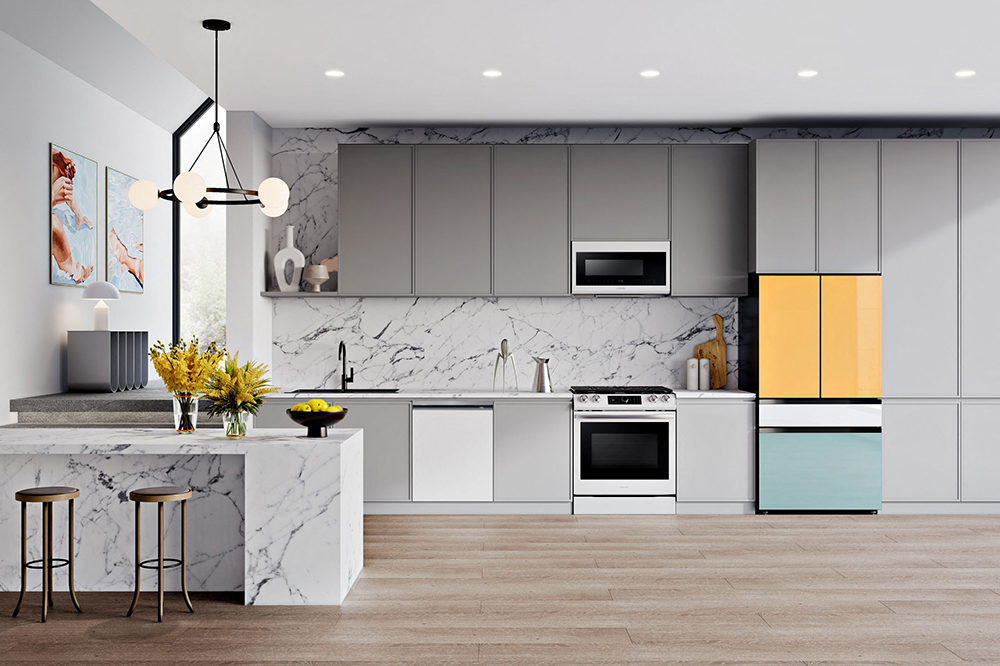
Samsung Home Appliances
In 2022, Samsung Electronics announced sustainability initiatives that will accelerate the development of eco-friendly home appliances, including its Bespoke line, which is shown here. The company is first increasing the amount of recycled plastic used in its home appliances, with a goal of increasing from 25,000 tons of recycled plastic in 2021 to 158,000 tons in 2024. In addition, Samsung has developed a new type of polypropylene recycled plastic for its washing machine tubs. Using discarded polypropylene and polyethylene from items such as used lunchboxes and facial mask straps, the company has created a new type of recycled resin that is resistant to external shocks, which creates an efficient yet sustainable product.
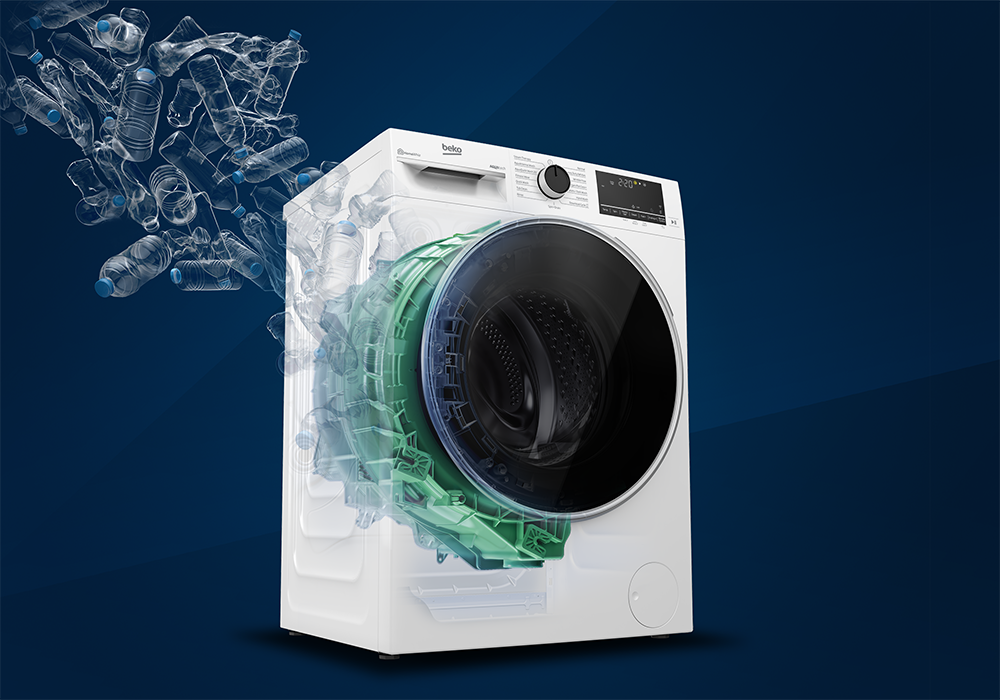
Beko 24-inch Front-Load Washer
Notable for its RecycledTub, the Beko 24-inch Front-Load Washer has a proprietary wash tub made entirely from 60 recycled plastic water bottles. Beko’s washer combines the RecycledTub with a number of advanced performance, wellness, and energy-saving features to create an environmentally-friendly and sustainable product. One particular highlight is AquaTech technology, which harnesses the power of water to replace harsh drum movements; this results in up to 50 percent faster wash times that are also up to 50 percent gentler on fabrics without compromising washing performance. Since they were introduced in Europe in 2017, washers and dryers with the RecycledTub have reused 58 million recycled plastic bottles and reduced CO2 emissions by 2,200 tons.
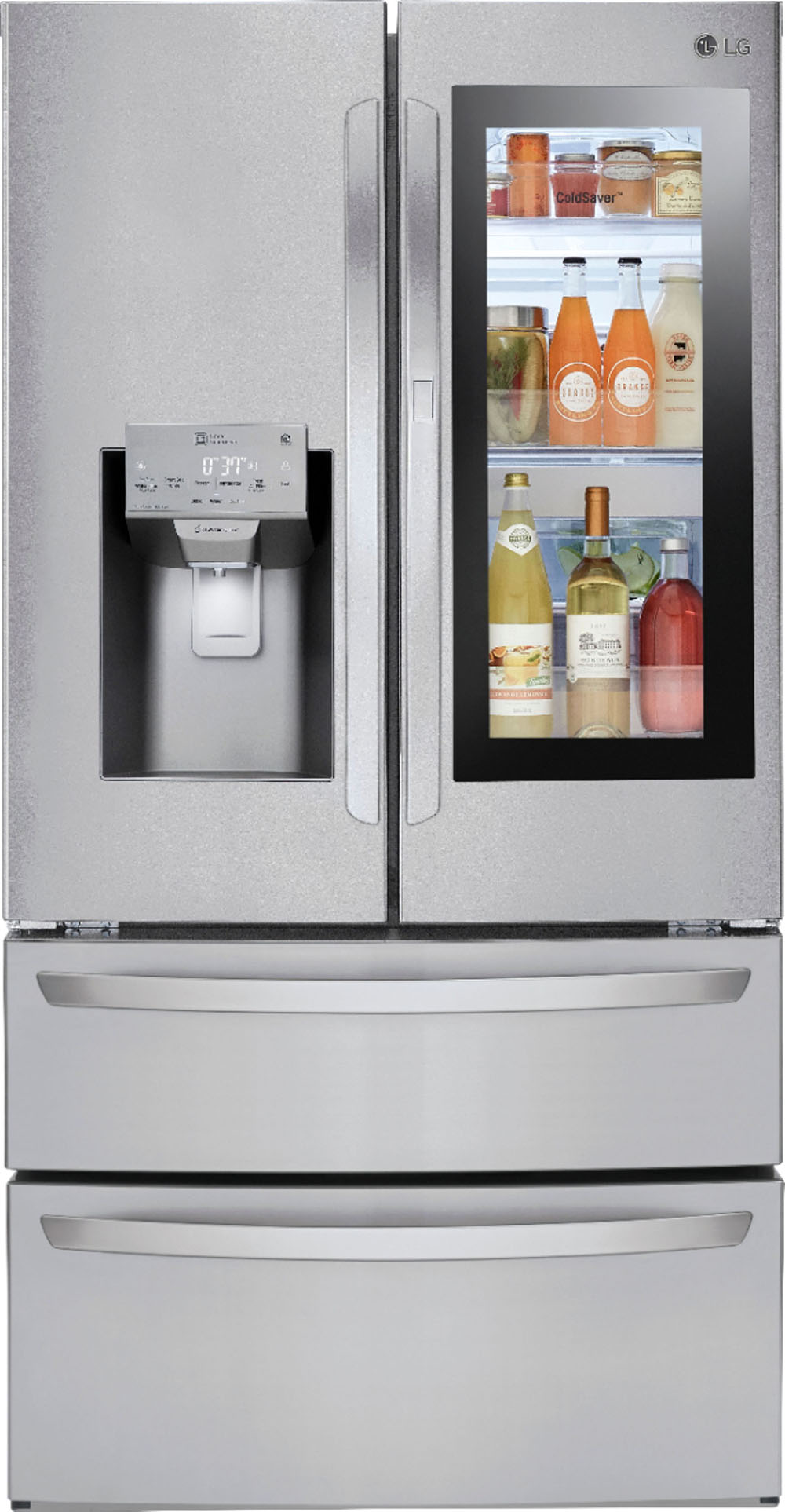
LG Instaview Refrigerator
We’re all guilty of it, but leaving the refrigerator door open accounts for about seven percent of the kitchen appliance’s energy use. LG is offering a solution with its InstaView Refrigerator. Just knock twice to view the interior contents – without cracking open the door. In addition, LG refrigerators LFXS26596 and LRMVS3006 have been recognized by the U.S. Environmental Protection Agency for their potential to significantly reduce greenhouse gas emissions.

GE Profile Laundry
GE Profile recently unveiled its new portfolio of smart laundry machines, including the first-ever washer with Alexa built-in. Along with Microban Antimicrobial tech that helps prevent bacteria growth, the laundry includes Smart Wash Technology, which automatically senses the amount of dirt and grime in the water and adjusts the cycle to clean the exact amount. This helps avoid over- and under-washing and energy waste. Smart Dispense technology also automatically adjusts the amount of detergent dispensed depending on the size of the load and detergent used, which reduces the amount of chemicals that are returned to the environment.

Natufia Smart Kitchen Garden
The Smart Kitchen Garden from Natufia is a fully contained cabinet gardening system created for sustainable and healthful in-home cultivation. The fully automated hydroponic unit can be stocked with more than 100 varieties of seed pods, offering constant access to fresh greens, herbs, and vegetables in the kitchen. This not only enhances the homeowner’s health, but also reduces the amount of groceries, which are often imported or have to be shipped long distances, that they need to purchase. The seedpods are grown in a limited, in-home footprint and don’t require pesticides, another contributor to environmental harm.
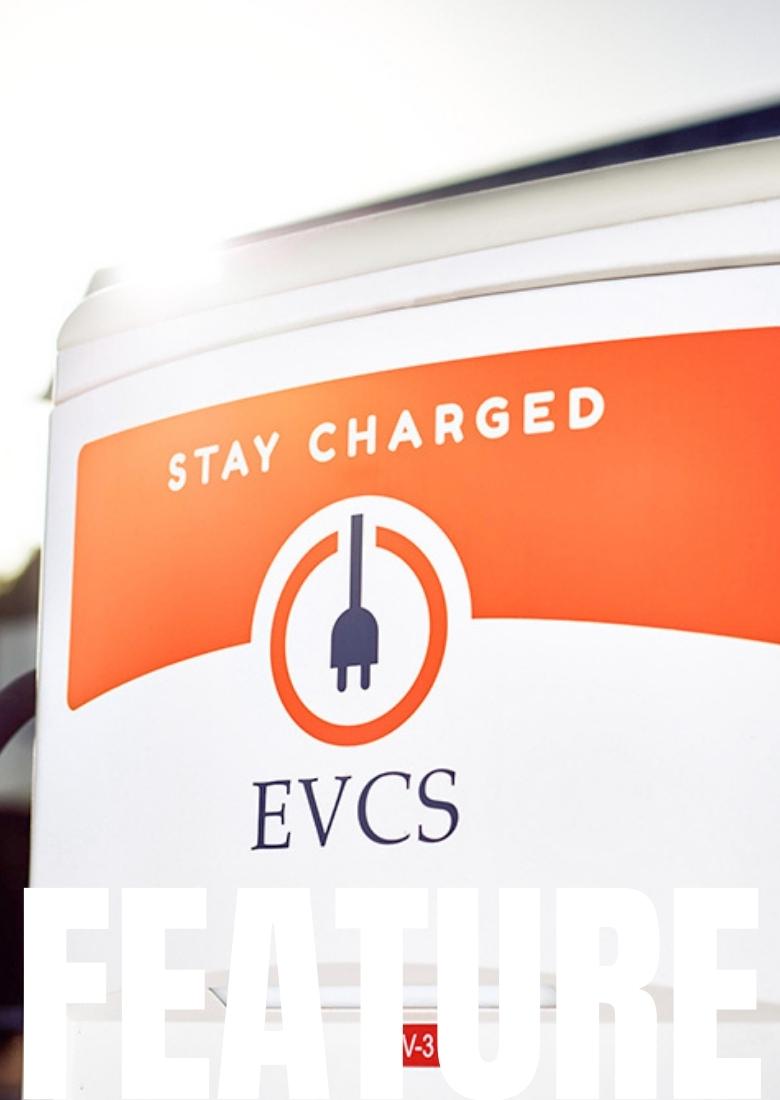
EV CHARGING STATIONS
Charging Ahead
More juicing stations are needed for the growing number of EVs, making it a great opportunity for retailers to attract in-store shoppers.
By JOHN R. QUAIN
With the sale of electric vehicles charging ahead and gas prices soaring, what the U.S. needs now are charging stations. So the federal government is helping states to install charging spots every 50 miles on the country’s highways. But that won’t nearly be enough — which provides retailers with an opportunity to capitalize on the situation by installing stations of their own.
“Through hosting a charger, retailers are able to capitalize on the growing trend of electric vehicles, while also actively showing that they’re committed to sustainability,” explains Gustavo Occhiuzzo, co-founder and CEO of charging company EVCS. The company recently collaborated with LA Fitness to install stations at its locations in Southern California. “It shows forward-thinking leadership,” said Occhiuzzo.
With states receiving $5 billion over five years to build out charging stations on interstate highways, the federal government hopes to encourage the transition to EVs. (Another $2.5 billion will go to rural infrastructure.) And there are plenty of network operators hoping to lay down as many charging stations as possible. Network companies include Blink, ChargePoint, and EVgo in the U.S., which currently only has about 46,000 public EV charging stations with approximately 120,000 individual charging ports, according to U.S. Department of Energy data. So, with EV sales increasing, automakers are anxious to build out the network as well.

Worldwide, car companies sold 6.6 million EVs last year, more than double the number sold in 2020, and more than triple the number sold in 2019, according to the International Energy Agency (IEA). And while soaring prices and chip shortages may have hurt the sales of traditional gas-powered vehicles in the U.S. – down 21.3 percent in 2021 – electric car sales jumped by 72 percent, according to Kelley Blue Book.
“GM is working with nine major charging networks, such as EVgo, to ensure GM EV drivers have access to more than 100,000 charge points throughout the U.S. and Canada,” says a GM spokesperson. With EVgo, GM will be adding more than 2,700 new fast chargers over the next five years. In addition, the company notably just started shipping its Hummer EV, an all-electric version of its road hog SUV. GM is also investing nearly $750 million to expand home and workplace charging. “General Motors believes a collaborative approach is the most effective way to deliver the charging infrastructure needed to accelerate EV adoption at scale,” adds the spokesperson.
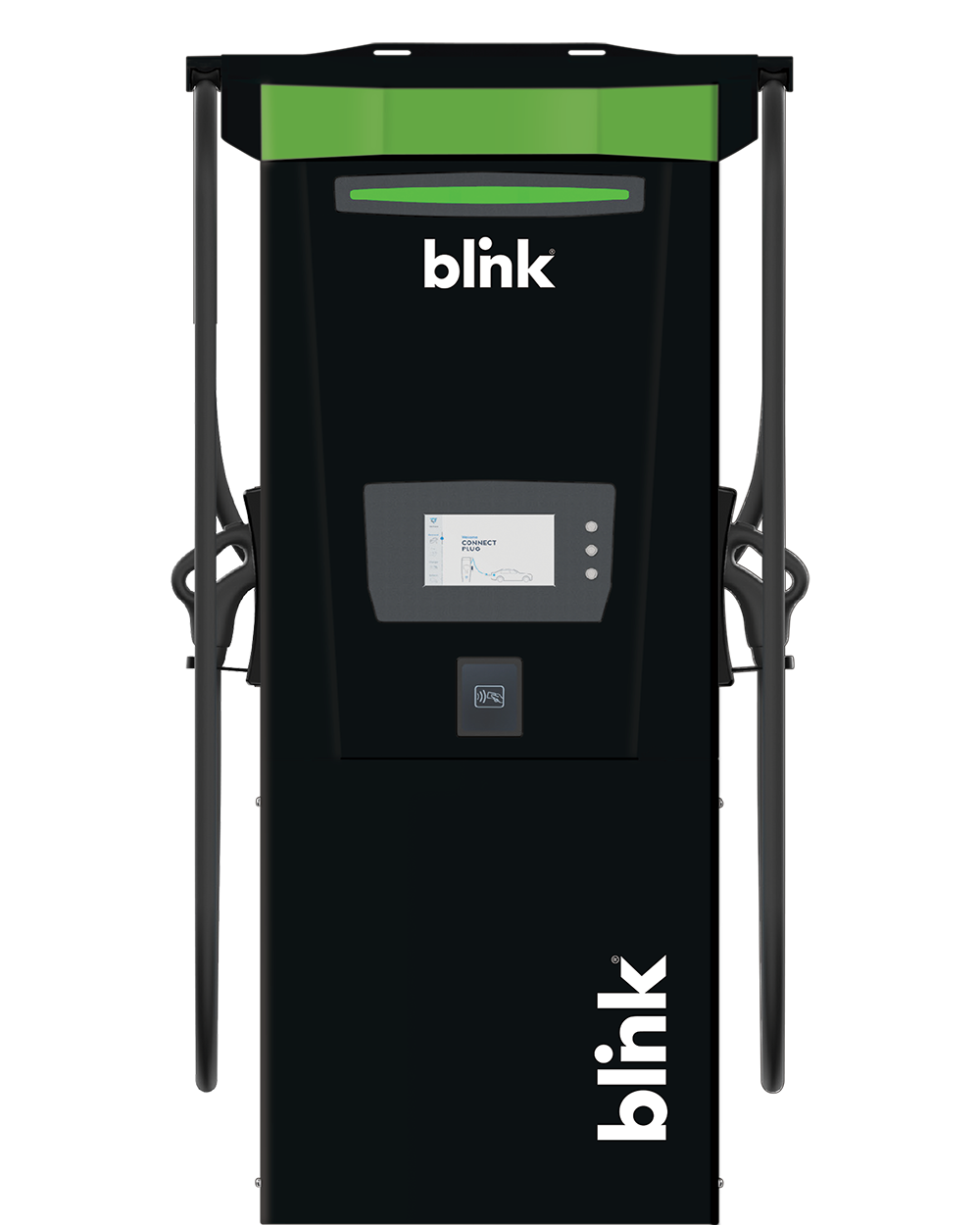
Retailers are expected to get in on the action, as well, offering charging stations in parking lots that help relieve so-called range anxiety: the fear that an EV will run out of juice on a long trip. Most EVs have a maximum range of 250 to 300 miles today. Considering that it’s best to recharge before going below 10 percent of power – and that most automakers recommend only charging up to 80 percent of capacity on the road – that puts a serious range limit on EVs, especially during long vacation and weekend road trips.
Fortunately, fast public charging stations can top up a typical EV in around 30 minutes, says Blink President Brendan Jones. That’s potentially 30 minutes of shopping by EV owners attracted by the charging stations. Some retailers are also allowing customers to shop online from their cars while charging and then having their orders delivered to them from the store before their EV is finished.
Most retailers favor arrangements where the network operator installs, owns, and maintains the stations, splitting the revenues with the retailer. That’s probably the wisest arrangement as the technology continues to improve and upgrades have to be made. For example, the highly acclaimed Hyundai Ioniq 5 is able to go from 10 percent to 80 percent battery power in just 18 minutes with a fast public charger – a major improvement over early EVs, and something newer chargers have to support.
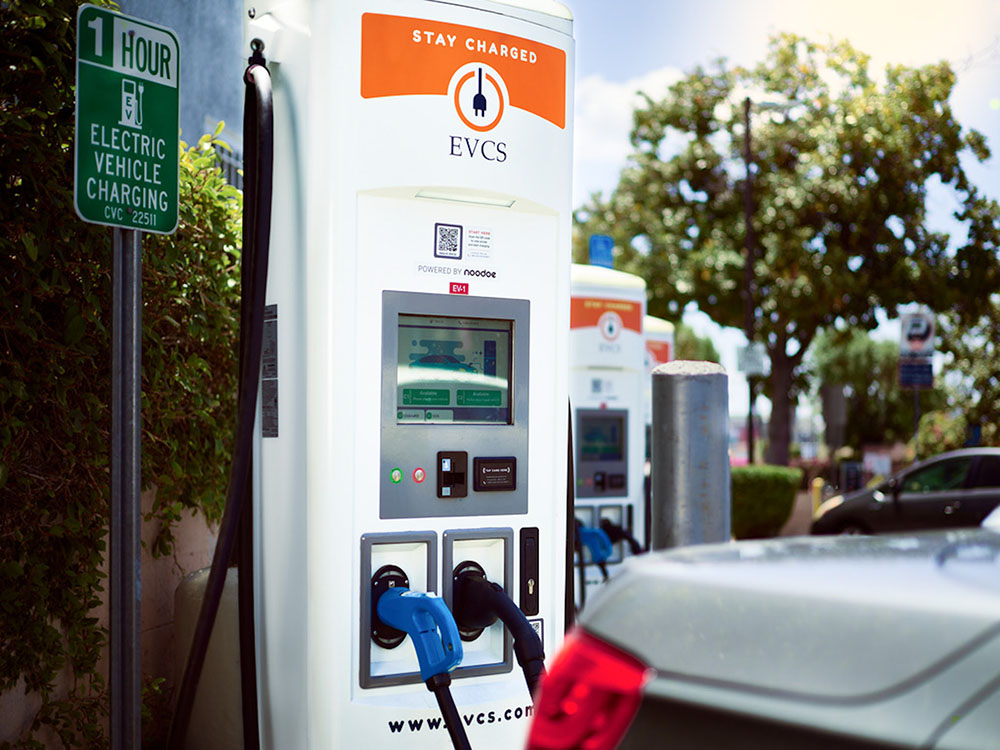
So where are the EV charging opportunities? Most of the existing public chargers are clustered in coastal states, such as California and Florida. But there are also a lot of EVs in those states vying for charging spots. California, for example, at the end of 2021 became the first state to see cumulative EV sales top one million vehicles.
Looking around the country, there’s plenty of opportunity elsewhere as well. The ratio of existing stations to EV owners varies widely regionally, according to a report from driving education site company, Zutobi. In Wyoming, for example, there are just 184 public charging stations but there are also only 330 registered EV owners in the state, giving it 55.8 charging places per 100 EVs. Meanwhile, in New Jersey, there are 2,020 charging stations – but there are 30,420 registered EV owners in the state, which means there are only 6.6 stations per 100 vehicles there.
So retail looks like the perfect place to fill the EV charging gap, according to EVCS’s Occhiuzzo. “It naturally intersects with where EV drivers are already going,” he says. “It will become more of a focus as high-powered charging stations and high-powered charging capable cars become increasingly common in public spheres and concentrated communities.”
KEY TAKEAWAYS:
- With states receiving $7.5
billion over five years to build out charging stations, the federal government hopes to encourage the transition to EVs. - Fast public charging kiosks can top up a typical EV in around 30 minutes, which is plenty of shopping time for consumers attracted by the stations.
- Some retailers are also allowing customers to shop online from their cars while charging and then have their orders delivered to them curbside before their EV is finished.
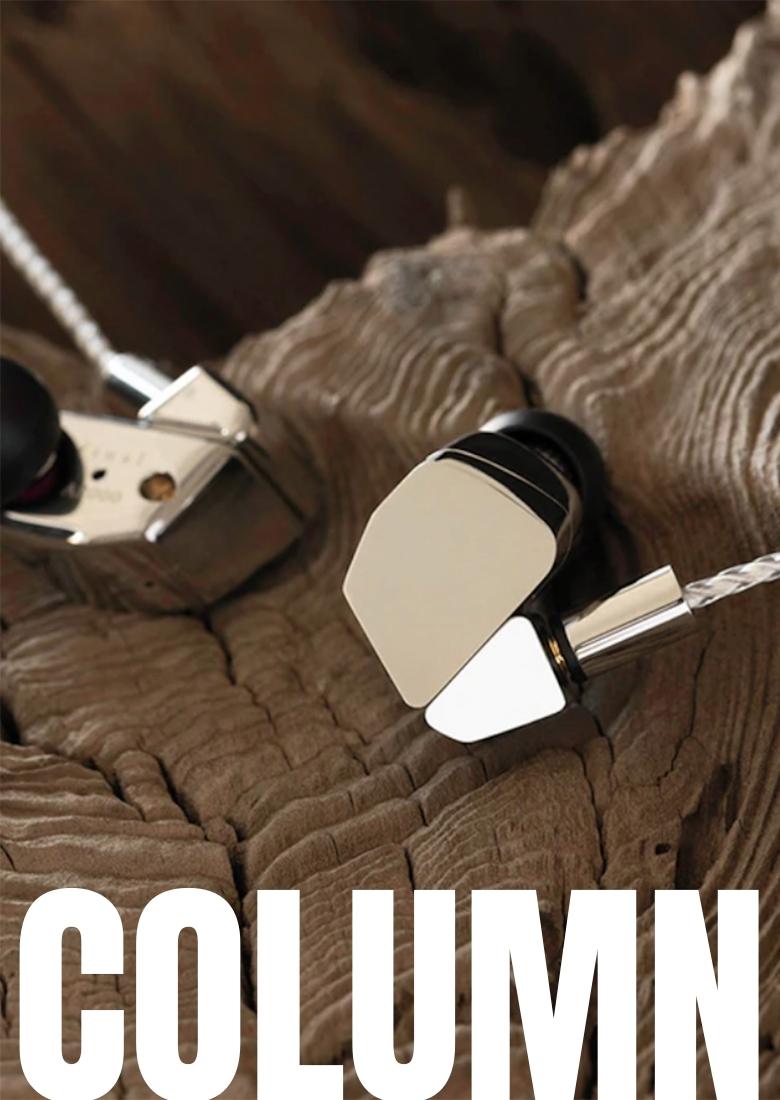
AUDIO
The CanJam NYC 2022 Headphone Show Returns
We were there in person, and here’s
what caught our attention.
BY NANCY KLOSEK
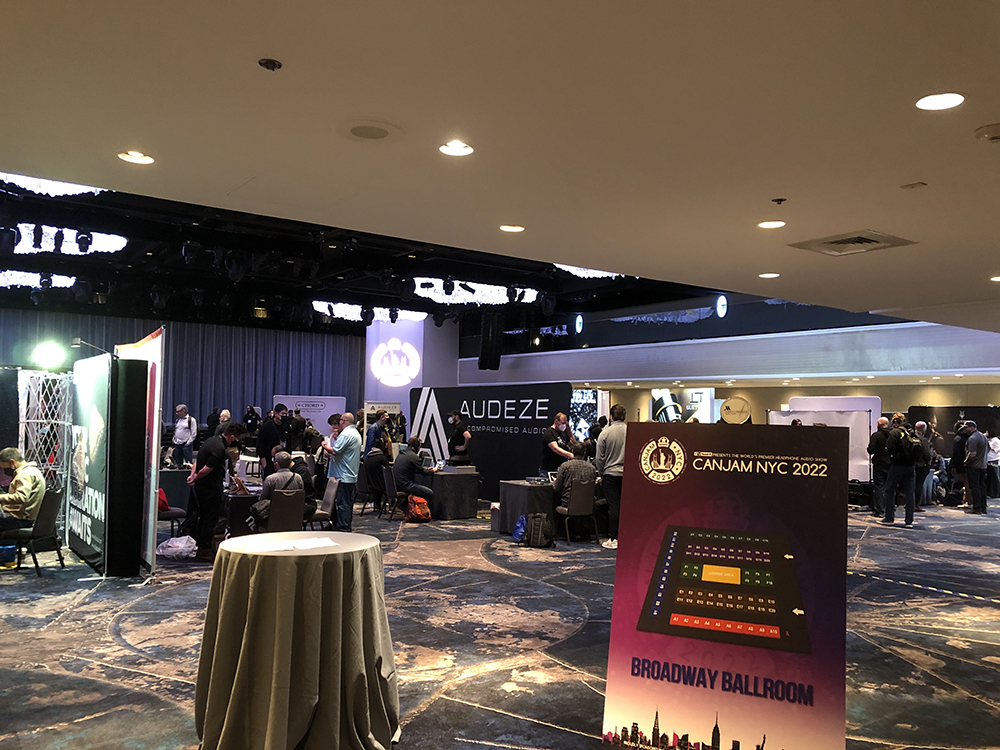
Audeze’s Filter
(Cover Image) Final Audio A8000
In New York City, it isn’t only Broadway that’s back. CanJam, the (nearly) all-headphones show, made a successful reappearance at the Marriott Marquis Times Square in late February, after a two-year coronavirus hiatus – echoing the refreshed resilience of the passel of musicals and dramas that play in the surrounding Manhattan Theater District. And the timing was perfect – it arrived just as indoor mask mandates were lifted due to New York’s receding COVID hospitalization rates.
Following are some of the products that caught our attention at CanJam NYC 2022:
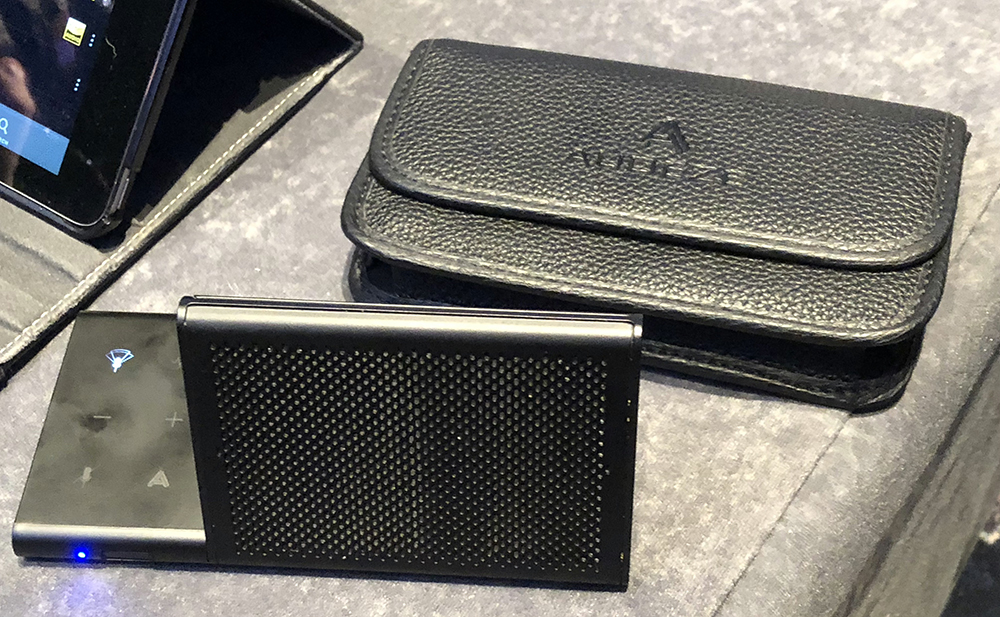
Audeze’s offerings at CanJam included some novel products representing the company’s reach beyond consumer headphones – including a headset developed for medical use in MRI testing that funnels high-quality music signals to the patient while considerably tamping down the acoustic noises the machine makes during that diagnostic test. But its main focus at CanJam was on a speakerphone – the company’s first non-headphone product – that can be configured to optimize the audio on Zoom and Teams calls. The Audeze Filter wireless conference speaker ($249), about the size of a smartphone, features Neural network noise cancellation that discriminates between desired and undesirable signals and eliminates the latter. A half-million noise samples were factored into its engineering, so barking dogs and crying kids would no longer be a distraction while working from home.
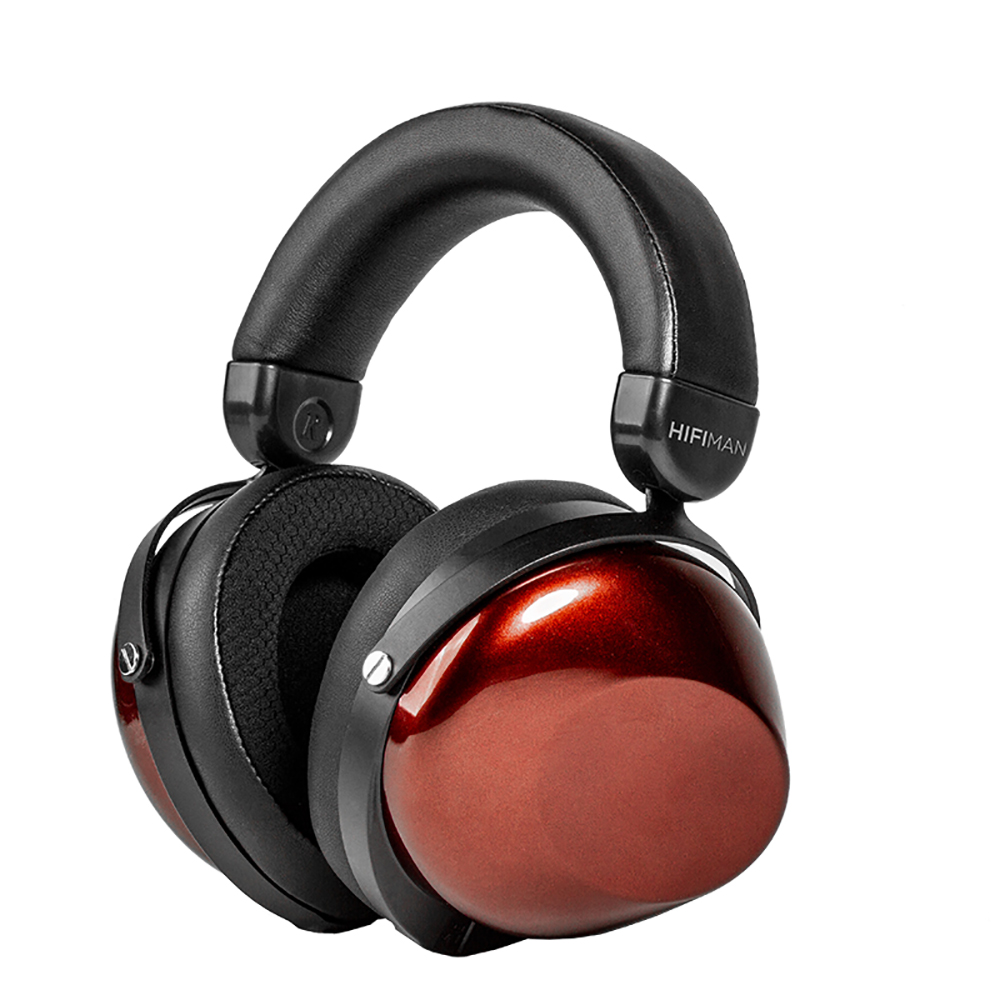
HIFIMAN brought its Topology Diaphragm technology, which optimizes high-frequency response to 35Hz and was introduced in its reference R10D model, into the more affordably priced new HE-R9 ($599) closed-back dynamic driver headphone. The R9s can be adapted for wireless listening when used with the company’s Bluemini R2R dongle (bringing the package price to $749).

Soundcore by Anker’s Liberty 3 Pro true wireless noise-canceling earbuds ($169.99) carry a novel feature called HearID, enabling the listener to personalize the sound beyond standard adjustment parameters. HearID automatically monitors external noise and analyzes in-ear pressure to fine-tune noise cancellation depending upon ambient circumstances. The listener can also proactively switch between different EQ preset modes and noise cancellation protocols. Battery life without noise canceling enabled is eight hours on a single charge and 32 hours (three full charges) of total playtime from the charging case; a fast-charging feature gets three hours of playtime from a 15-minute charge.

The New York City-based Audio46 headphone destination store demo’ed multiple models at its stand. One of the newest products it carries that was on display was the Strauss & Wagner EM8C wired earbuds ($49.95), which feature a USB-C plug connection for use with desktop and mobile devices. Also part of the design are a three-button remote offering volume and playback adjustment capability, and an integrated mic with a sensitivity of 43dB, to allow the listener to take calls and issue voice commands to the connected device.
Included among the exhibited products at the Final Audio stand was the jewelry-like A8000 in-ear headphone – at $2,000, the flagship of its A Series in-ear models. The A8000 features a pure Beryllium diaphragm dynamic driver the company says is notable for its lightness and high sound speed characteristics, while showcasing Final’s brand of engineering expertise that fully measures up to its design aesthetics.
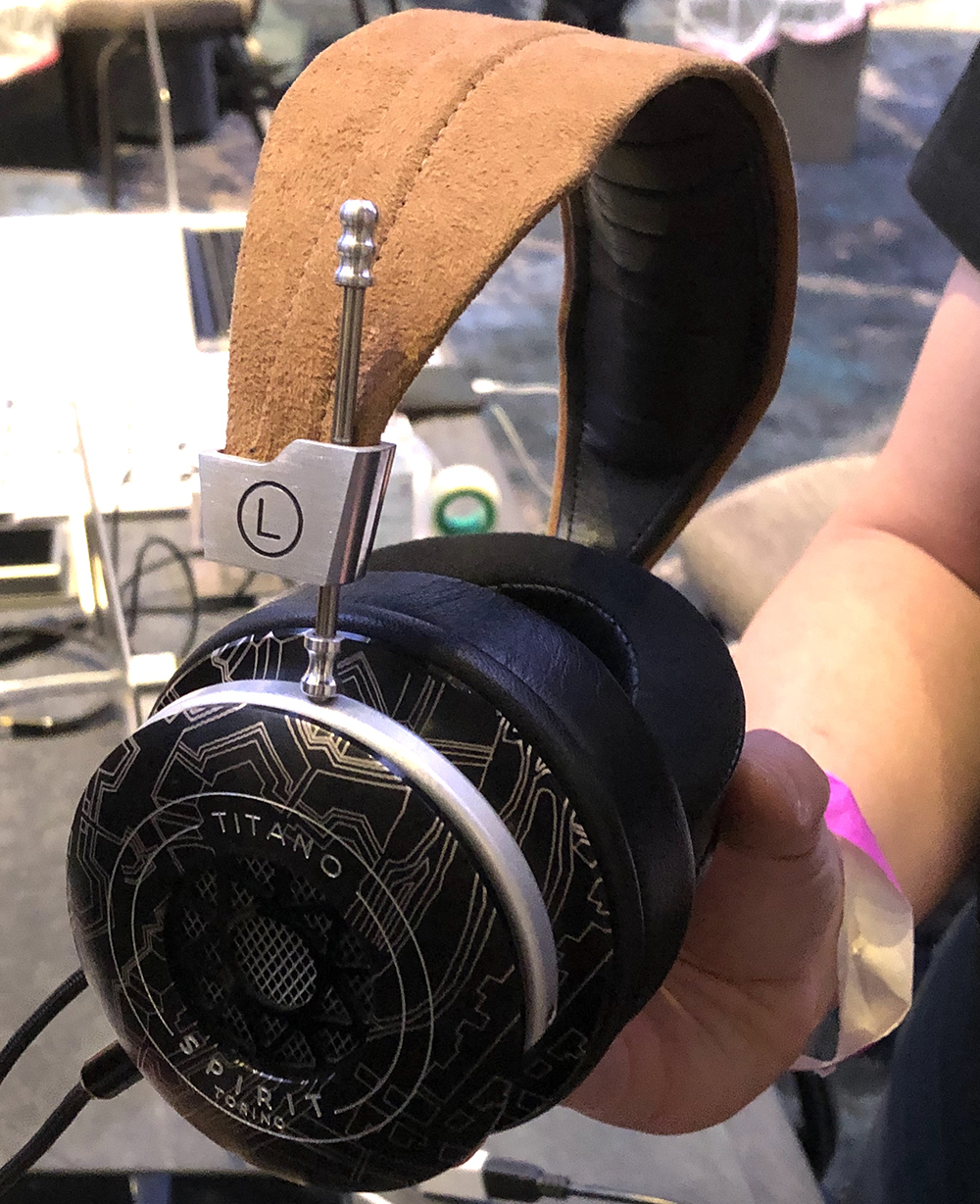
Italian headphone maker Spirit Torino, with its selection of headphones, highlighted its attention to design sensibilities as well as to superior sound quality at CanJam. Among models demo’ed was the Titano semi-closed circumaural headphone. This headphone’s semi-closed design is said to provide the acoustic advantages of an open system while emitting 50 percent less sound to the outside. Its earpads, developed with Dekoni Audio, incorporate what has been dubbed the VPS (Ventilation Pad System), a variable front ventilation system that is adaptable to different types of amplification.
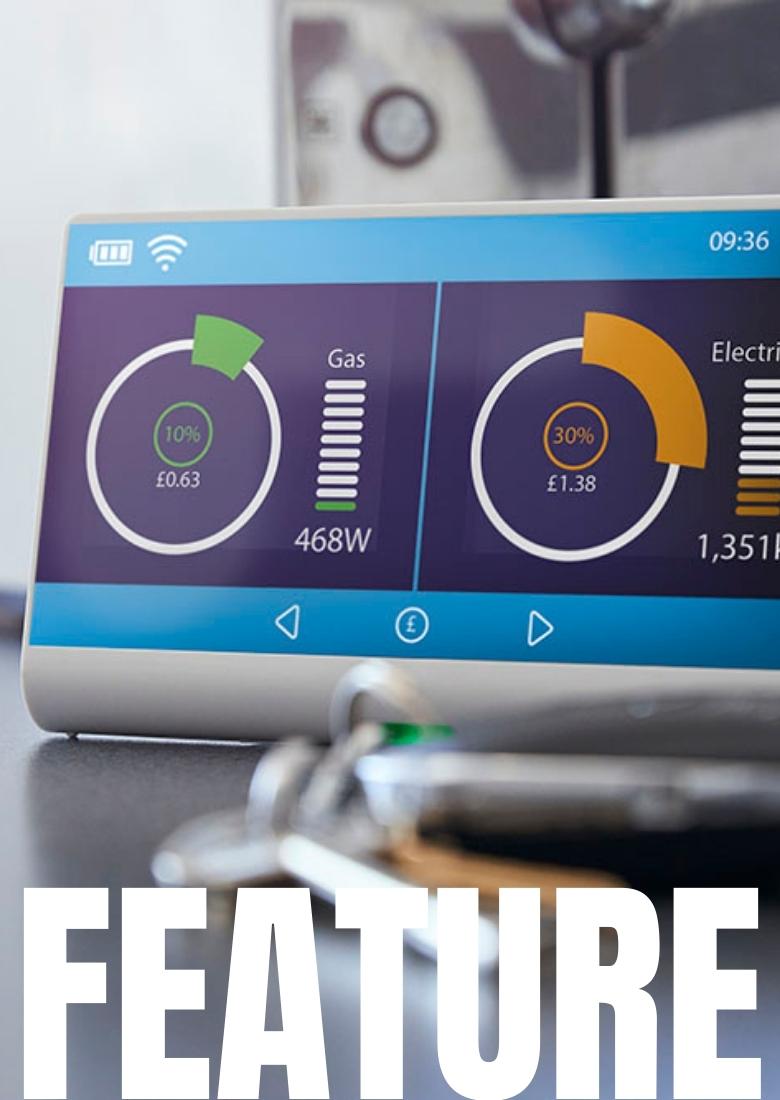
SMART HOME
Energy Management
and the Role of Utilities
New business models and technology can help drive customer engagement and participation in eco-friendly programs.
By ELIZABETH PARKS, President and CMO, Parks Associates
Utilities are in a unique position, as their customers span multi-generations, income and education segments, renters, homeowners, and individuals, in addition to families. In traditional, non-retail markets, which represent the majority of households, their relationship is long-term. They are a trusted advisor in their communities, even though many consumers only interact with their utility when moving to a new residence, paying a monthly bill or when an outage occurs.
Energy management is a key component of the connected home, and utilities are a key distribution point — 23 percent of U.S. broadband households that bought a smart home device in the past 12 months made the purchase due to an incentive, discount, or rebate from their energy provider.
New business models and technology provide opportunities to change the customer relationship and drive engagement and participation in utility programs that optimize energy usage and incentivize consumers to be more energy-efficient. Progress over the past few years includes new partnerships that enable utilities to integrate with different platforms to provide consumers with a more personalized/interactive experience with their utility provider.
While most consumers value having a high-efficiency home, most also have a low bill. The Energy Information Administration (EIA) reported an average monthly energy bill of $111.67 in 2017 in the U.S., with a third of households having an average utility bill of less than $100. Parks Associates’ latest research of 10,000 Internet households shows that the average spending on electricity is $146 per month.

The use of renewable energy is changing consumers’ mindsets to a more energy-conservative concept. Utility providers and technology companies are currently implementing solutions that give consumers the means to monitor and set energy usage in their homes with the rollout of smart meters across the U.S. According to the U.S. Energy Information Administration, “U.S. electric utilities had about 102.9 million advanced (smart) metering infrastructure (AMI) installations and about 88 percent of them were residential customer installations.”
Parks Associates’ latest data shows that 44 percent of Internet households, or almost 50 million households, say they are taking active steps to reduce their energy consumption at home. Utilities seeking to fulfill the goals of energy efficiency programs are introducing new home energy management programs (HEMS). These programs utilize energy monitoring and data services to allow customers to view their energy usage. Usage feedback and tips may take the form of a bill insert, web application, or mobile app.
Utilities have been the primary providers of HEMS tools and have helped attract and retain customers and meet energy efficiency goals. As more home automation platforms include energy monitoring features, bundling of services will likely disrupt the position of utilities, as integrated services offer consumers convenience through centralized control, data dashboards, and communications. The challenge of HEMS services is in keeping consumers engaged over time after the initial novelty wears off.
To date, U.S. household adoption of smart home products is driven by security and safety use cases, but energy-related use cases are helping push the smart home market beyond early adoptions to reach the more cost-conscious mass market. Behavior modification, i.e., adjusting lifestyle patterns to realize greater efficiencies, is key to effective home resource management. The intelligence and automation offered by these smart energy and water devices can free the consumer from the daily choices required to manage energy or water resources better.

FINANCIAL SERVICES ROUNDUP
Navigating the
Sell-Through Journey
The financial services sector catering to consumer technology and appliance retailers is meeting myriad and continuing pandemic-period challenges in the market with innovative programs that serve both dealer and consumer alike.
COMPILED BY NANCY KLOSEK

Dealerscope: In what ways has the pandemic period and all its corollaries (i.e., supply-chain disruptions, inflation, etc.) impacted the retail finance sector – particularly the consumer technology and appliance industries? And how long do you expect the effects to sustain and
continue to impact your sector?




Orlando Zayas
CEO, Katapult:
The last year presented unique hardships for consumers, who suffered mentally, physically, and financially as a result of the COVID-19 pandemic and corresponding inflation. In addition to consumer hardships, retailers had to battle supply-chain issues, staffing challenges and product shortages.
To meet the needs of customers, and also out of necessity, ecommerce and in-store retailers took steps to offer purchase solutions that enable more shoppers with a variety of credit profiles to purchase necessary items, not just those with high incomes and great credit scores. When retailers provide lease-to-own options for their customers, it allows individuals to space out their payments, select affordable payment amounts and implement payment schedules that fit their budgeting needs, all with the flexibility to buy out early at a discount or return their items if necessary.
Implementing lease-to-own options should be top of mind for retailers, as the lasting effects of COVID-19 continue to touch consumers and retailers on a daily basis





Velicia Sutton
Electronics and Appliances Leader for Wells Fargo Distribution Finance, Wells Fargo:
Our industries have been greatly impacted by the pandemic and its corollaries; however, our customers have done well in navigating these challenges and pivoting as needed to overcome any obstacles. Many of our dealers are facing inventory shortages driven by supply-chain challenges and high demand, yet they have demonstrated their ability to adapt, and are financially healthier than we’ve seen in years prior. Additionally, some dealers are needing to sit on product longer as they wait for pieces to come through the supply chain and complete an order, but they’re proactively putting strategies in place to manage their inventory levels. The third component is finding and retaining strong talent, as COVID exposures are putting people in quarantine or out of the office. In terms of timing, the pandemic remains the wild card, but we expect to see supply-chain shortages through at least the end of 2022.






Dealerscope: What major trends have arisen recently that you are tracking, with regard to leveraging them to tailor the particular financial products and services you offer to retailers so they can profitably serve their consumer technology and appliance customers?




Curtis Howse
Executive VP and CEO, Home and Auto, Synchrony:
The acceleration of digital transformation (such as the changing point of sale and buying paths) has created new financing expectations, which Synchrony is addressing in several ways.
Synchrony’s most recent biennial Major Purchase Journey Study shows that the in-store experience is critical. Consumers still make most major purchases in the store, and their interactions with sales associates significantly impact the purchase decision. In addition, financing options and payment plans have become even more important over the last two years.
Our study illustrated the changing nature of shopping. Nearly half (44 percent) of respondents said the in-store experience is essential for shopping for electronics. However, 55 percent of shoppers never visited a physical store, an increase of 19 percent in two years. Mobile device use for product research increased, too, as 67 percent of shoppers used a mobile device, up seven percent since 2019.
The average amount spent on electronics increased 23 percent in 2021 to $1,494, with in-store purchases decreasing 25 percent and online purchases up 25 percent. More than half (52 percent) of consumers surveyed indicated financing makes larger electronics purchases more affordable, 66 percent said they are comfortable financing through a retailer-specific credit card, and 34 percent seek financing options when making large purchases.
For Synchrony, these changes represent an opportunity to capitalize on as the point of sale and the payments landscape evolve. Indeed, both businesses and consumers are looking for better ways to integrate payment into their lives. Consumers demand choices – such as a broader range of financing products and capabilities. Retail partners demand multiple products, faster integration, increased approvals, more personalization, and assistance with lead generation.
To meet these new expectations, we have harnessed our technology expertise, more than 80 years of financing knowledge, and passion for invention.
At the beginning of the pandemic, we accelerated our business and technology roadmaps to help electronics partners continue to conduct business amid the harsh new realities. We accelerated contactless features, for example, and added additional digital capabilities to help with applying for a credit card, including direct to device, prefill, and text to apply.
We also paid close attention to Millennial and Gen Z consumers. Accustomed to apps like TikTok, which enable individuals to create and consume content rapidly, these younger consumers demand the same kind of intuitive experience in every aspect of their digital lives, including their journey with financial services products. That’s why you’ve seen Synchrony invest in technologies that let us manage trillions of data points and extract insights to improve the services we provide.
We have about a dozen financing options and use analytics to identify the right product for each customer. In this way, we offer them the right product for every stage of life’s buying journey. A customer might start out with a Synchrony Buy Now Pay Later or installment-type product, then move to a private-label product as their ability to pay back matures, and finally graduate to a dual card with the most compelling value proposition that can be used anywhere around the world. We also use additional modeling techniques to predict profitability for a given cohort, allowing us to pinpoint the customers who are more likely to generate the greatest incremental returns.
Finally, we’ve influenced consumers’ financing use by embedding payments into workflows to declutter and speed up the checkout. The idea is to streamline, simplify and empower. Consider Clover, a point-of-sale and business management platform from Fiserv that offers a wide array of business apps available through the Clover App Market. Electronics merchants simply choose the apps they need as they need them. By making our products and capabilities available through the App Market, Synchrony can improve the experience and usability for both employees and consumers and drive conversations. The functionality is right there when they need it.





Sutton:
Something we’ve been keeping an eye on for a while is the evolution of e-commerce in this market. While promotional activity is not as needed in this current environment due to high demand, we’re seeing many of our dealers building out their websites and increasing their presence on social media. Another trend we’re looking at is seeing what areas of the market will sustain beyond the pandemic, such as working from home and the turnover cycle of appliances. From our end, we look at our portfolio and make sure we have the right programs and relationships to benefit our dealers and enable them to have access to the product they need.






Dealerscope: How are your methods of training retail sales associates being handled these days to ensure that retailers are properly and effectively presenting your services to customers?




Howse:
Introducing the idea of financing to a customer starts well before the consumer engages with the retailer. Training is essential. Synchrony helps to provide the right tools to enable the retailer to train its staff to sell financing successfully. Employees must understand what financing is and what it isn’t, explain its benefits in simple, everyday language, and handle customer hesitations. Our online training portal, Synchrony Learning Center, offers practical training videos, information-rich PDFs, and self-paced online courses covering these and many other topics on how to offer financing to drive more sales and loyalty. We complement the online training portal with ongoing communication with our retail partners to ensure that associates feel comfortable asking every customer, at every purchase, if they are interested in financing plans. This blended learning approach has helped our partners attract and retain new customers, while increasing the amount existing customers spend.






Dealerscope: What are the biggest challenges your industry faces in the consumer technology and appliance spaces in 2022, and how are you addressing them? And, what are the biggest benefits retailers can realize, when working with you to address consumer needs?





Sutton:
As mentioned earlier, the biggest challenges are supply-chain impacts and inventory levels. We are doing three main things to assist our dealers through this cycle: the first is proactively managing credit lines and credit utilization to ensure dealers have capacity where product is flowing, and that we don’t interrupt that flow. We also partner with our vendors and OEMs to enhance technology where needed or put processes in place to manage pending orders so those aren’t impacting the credit line. And lastly, customer service is core to what we do, and we make sure we’re proactive and available when questions arise as this space continues to evolve.




Zayas:
Katapult provides lease purchase options to non-prime consumers, giving them a better way to obtain the things they need through the retailers they shop. The main challenge we face in our industry is lack of retailer and consumer awareness surrounding lease-to-own options. For retailers, our partners that have implemented lease-purchase POS payment solutions are now able to reach and convert new shoppers, increase transaction amounts, gain strong customer loyalty, and lower cart abandonment. As more retailers learn how they can leverage lease-to-own options to grow their business, they’re recognizing that by not providing alternative purchasing options to non-prime consumers, they are missing out on a whole segment of potential buyers.




Howse:
We believe the industry’s most significant challenge is increasing prices. To address rising prices, Synchrony has invested in technology that enables our retailer partners to offer consumers choice in payment products and terms to meet their budgets. More than half (52 percent) of consumers surveyed indicated financing makes larger electronics purchases more affordable, and 34 percent seek financing options when making large purchases. Whether it’s promotional financing ranging from six to 60 months or interest-free loans that the consumer can pay back in four installments (Pay in 4), retailers have options for fixed payment plans and short-term loans that address a wide range of consumers.






Dealerscope: What is the outlook for your business for the rest of 2022? And what kind of above-and-beyond assistance can retailers count on you for, moving into the end of this year and into next year?




Zayas:
Inflation is expected to be a significant challenge in the foreseeable future, which means consumers will continue to look for ways to make their money go further. As a result, we expect lease-to-own programs to continue to grow in popularity, as they help consumers stay within their budget and enable retailers to build long-term relationships with customers by offering customer-centric options, such as fast approval and early purchase options. Katapult’s consumer-centric focus ensures an efficient application and approval process while providing transparent and tailored payment terms, creating a win–win for both retailers and consumers alike.





Sutton:
So far, 2022 has presented challenges and unknowns, from COVID, to supply chain, to labor shortages, but overall, we remain optimistic and expect to see another strong year. The replacement and builders market is driving continued demand, consumers are still using their products more than ever, and our channel has been able to navigate through inflated prices thus far. For us, we recognize our customers are getting more digitally sophisticated, and it’s a top priority for us to invest in technological innovation and deliver an even more connected and valuable experience. This includes investing in Application Programming Interfaces (APIs), advancing our customer reporting and analytics capabilities, and improving our dealer onboarding experience using automation. To reiterate, customer service is a fundamental part of our business, and we continually challenge ourselves to improve.
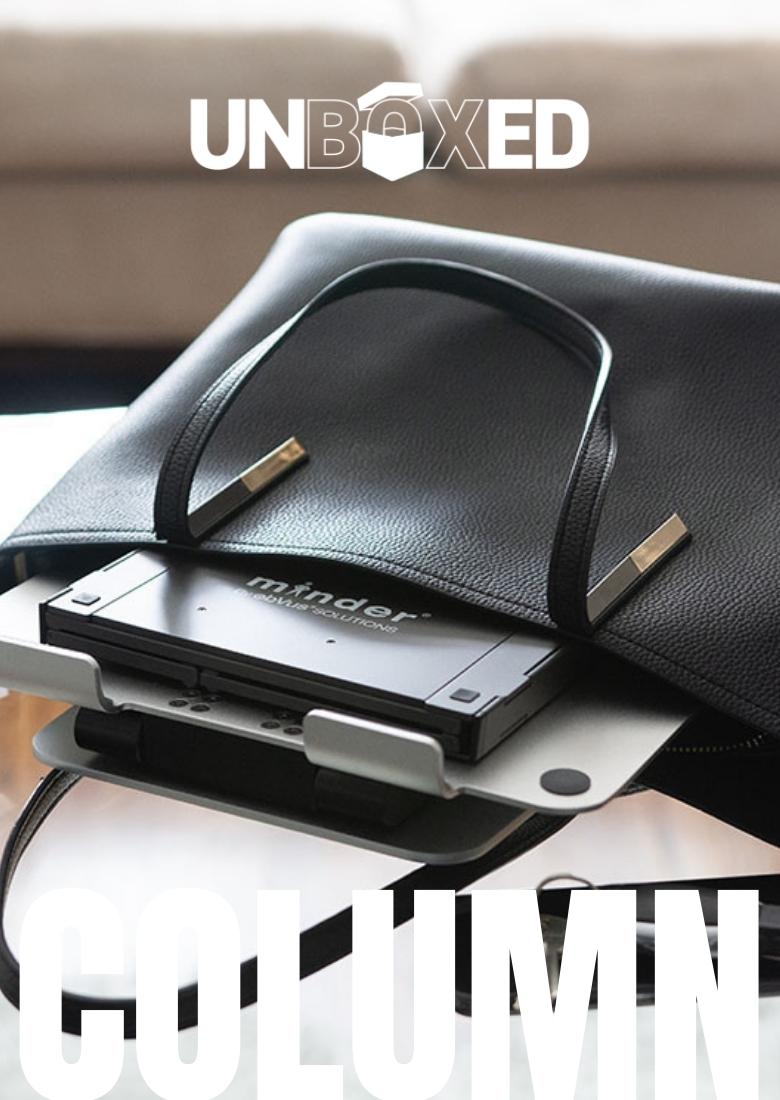

UNBOXED
ObVus Laptop Tower Stand 2.0
Say goodbye to tech-related neck and back pain with the Laptop Tower Stand 2.0 and Ergonomic Bluetooth Foldable Keyboard from ObVus.
BY SAM HITT
Accessories and gadgets in the health and wellness space have piqued consumer interest throughout the pandemic. Just look at Peloton, or the rise of Fitbit-like devices such as Whoop. Consumers are interested in solutions that help them develop more healthful habits in their daily lives.
Personally, as a health- and wellness-conscious consumer, I experience social media feeds that are flooded by advertisements for little knickknacks promising often desired, yet elusive, benefits. By and large, I’m skeptical of this category of products. However, while covering ShowStoppers last month, I came across the Laptop Tower Stand 2.0, and the Minder Ergonomic Bluetooth Foldable Keyboard from ObVus Solutions, and decided to give them a try. This accessory combo from ObVus Solutions, which was founded by Ken and Jaimie Rosenblood, a husband-and-wife team based out of California, is designed to fix the negative posture habits developed by the average computer user.


The ‘Tech Neck’ Problem
My roommates and I have spent the better part of the last year and a half complaining about the amount of time we are spending on the computer, and how it is affecting our physical wellbeing. We are not alone. Over the past two years, the American population has spent more time in front of computers – blame online classes, remote work, Zoom parties – than ever before. According to statistics obtained by Forbes early in the pandemic, Internet usage has increased roughly 50-70 percent. This boost in screen time has come with a corresponding increase in tech-related ailments. A study conducted by Harmony Healthcare IT found that Google searches for tech-related issues have risen by 40 percent overall with “tech neck” searches increasing by 16 percent and back issues searches, by 12 percent.
Bad posture when working at a computer plays a major role in this increasing physical discomfort, since it places added weight onto the spine’s three natural curvatures. Sitting improperly for long periods puts more tension on your body and can lead to a wide range of health complications including diminished breath capacity, an exaggerated curve in your lumbar region, a hunched back, or even the development of spinal arthritis.
Unboxing
Right away, I was struck by the compactness of both the keyboard and the tower stand. When folded up, the two devices together don’t take up any more space than my laptop (The keyboard itself, for example, folds into a slim rectangle that is roughly the size of a tablet.) In terms of setup and use, this product is extremely straightforward. Upon taking the product out of the box, you simply have to pull the two faces of the Laptop Tower Stand 2.0 apart, and voila, you are ready to go. Setting up the keyboard takes the same amount of effort. Just turn on the keyboard, which comes fully charged, and connect it to your computer via Bluetooth. The product also comes with a handy instruction manual, if you are having trouble.
How It Works
According to the Mayo Clinic, a healthy sitting posture consists of having the top of your monitor at eye level and positioning your keyboard so that your arms are at a 90-degree angle. The Laptop Tower Stand 2.0 takes aim at bad posture by allowing you to constantly adjust your computer to retain an optimal height despite variations in the surface height of the desk or counter you are working on. The stand can be set at an elevation ranging from 2 to 21 inches, which prevents you from leaning forward and hunching your back or straining your neck upwards. The differentiating feature setting the Laptop Tower Stand 2.0 apart from the original is the nifty mini stand for your phone. The phone deck, which is built into the base of the stand, can be set at a variety of angles directly below your computer, allowing you to stay attuned to incoming calls while you work.
The Ergonomic Bluetooth Foldable Keyboard can be paired with up to three devices at a time. When fully deployed, the keyboard has a width of 13.5 inches but features two separate hinge points that allow it to fold into a 7-inch-by-4-inch rectangle. Both the stand and the keyboard are made out of a durable yet lightweight material that makes the combo ideal for people who work on the go.
Home Office Improvement
As someone who works almost entirely remotely, I didn’t know how badly I needed the Laptop Tower Stand 2.0 until I got my hands on it. The accessory has allowed me to turn my kitchen countertop into a comfortable standing desk with ease, and features a plethora of grip pads to keep my laptop firmly secured to the stand at all times. Not once have I been afraid of my laptop falling off the stand and getting damaged. I am naturally someone who has bad computer posture and am happy to report that I feel much less pressure in my upper back and neck area as a result of using this product.
My experience with the Ergonomic Bluetooth Foldable Keyboard was more mixed. I have found that it is more comfortable for me to ditch the keyboard and just type on my laptop when in a standing position. Whether or not this is ergonomically correct, I have no idea. However, the keyboard is definitely a necessity when using the laptop stand at a desk. The keyboard is simple, yet effective at fulfilling the job required by it.
For me, the major draw of the keyboard is its portability. It’s extremely lightweight and folds in on itself to protect the keys when in transport — perfect for a backpack. Moreover, while some other folding keyboards on the market place the hinge point smack dab in the middle of the spacebar, the Minder keyboard folds around the spacebar to leave it fully intact. My main frustration with this keyboard came in regard to the touchpad. I found that it was rather unpredictable and hard to control, as I was constantly selecting and unselecting things when I was simply trying to scroll through a document.
Bottom Line
All in all, I love the Laptop Tower Stand 2.0 from ObVus Solutions but could honestly survive without the Ergonomic Bluetooth Foldable Keyboard. That being said, being able to transport the keyboard and stand in the laptop sleeve of my backpack is a major draw, and the keyboard is undoubtedly effective. The health benefits marketed by ObVus are also no gimmick. My neck and back feel immensely less tense since I made the transition to the tower stand.
Retailers interested in carrying the Laptop Tower Stand 2.0 and the Ergonomic Bluetooth Keyboard, which retail respectively for $89.99 and $49.99, can go to www.obvus.me.
Specs:
Obvus Laptop Tower Stand 2.0
Height: 2-21 inches (for laptops up to 17 inches)
Price: $89.99 at www.obvus.me
Obvus Ergonomic Bluetooth Foldable Keyboard
Size: 7 inches by 4 inches folded, 13.5 inches by 4 inches flat
Price: $49.99 at www.obvus.me


GEN Z CONSUMERS
Inside the Hearts and Minds of Gen Z
The youngest buyer generation is anything
but cocky and confident.
By ERIC WAGATHA
It might be tempting to think that Generation Z – the 15-to-25-year-old consumers who have become a near obsession for mainstream marketers – are just like Millennials when they were the same age. But very different experiences and a changed world have made Gen Z a population like no other – and one that tech brands and retailers need to understand. In just a few years, Gen Z will begin its prime consumption years, with its concerns and desires driving much of the growth in the consumer economy.
So what do we know about this emerging cohort? What learnings can we apply to planning our brands more wisely, in the short and long term? According to research from GfK Consumer Life, here are just a few of the characteristics that make Gen Z uniquely promising — and challenging at the same time.


They seek guidance.
More than half (52 percent) of Gen Z consumers say that they “seek the advice of others before making a purchase” – eight points higher than the U.S. average. And “online reviews” are among their top five most important brand attributes when selecting tech products – a further confirmation that they rely on friends, family, and even strangers to help them make smart purchase choices.
They often feel overwhelmed.
Gen Z consumers may find large purchases, such as cars and homes, overwhelming because they are shopping for these items for the first time. In addition, Gen Z in the U.S. has been raised in an age of abundance – they have virtually all of the world’s information in a device that fits in the palms of their hands, but they also have much more to process and consider when making even simple daily choices. One of Gen Z’s top-10 attitudes towards life is “I often feel overwhelmed with information” – a statement that does not even place in the top 30 for most people in the U.S.
They are less focused on ownership.
We have found that Gen Z consumers are fine with just subscribing to or renting things that older generations – like Baby Boomers – would naturally want to buy outright. More than half (56 percent) of Gen Z consumers in the U.S. say they are interested in leasing personal electronics items, compared to 47 percent of the general U.S. population – and nearly half (46 percent) would be open to the idea of paying a small monthly fee to rent or borrow small appliances that they only need now and then.
This receptivity to ownership alternatives even extends to cars, with 45 percent of Gen Z consumers saying they would like to learn more about “subscriptions” that would allow them to try out different auto models at will, rather than committing to a single vehicle. As the overwhelmed generation, Gen Z may prefer simple access to ownership because it reduces financial commitment, is less stressful and more turnkey – and eliminates concerns about repairs or obsolescence.


They are OK with being ‘late adopters’ of technology.
Although often touted as the “smartphone generation,” Gen Z is not made up of early adopters. Gen Z consumers are not always anxious to be the first to try new gadgets and services. When asked to rank statements that reflect their technology attitudes, Gen Z survey respondents placed “I prefer waiting to buy new technology products” at #3 – four spots higher than Millennials.
Why? GfK Consumer Life research also found that Gen Z consumers are more likely than Millennials to report negative feelings about technology and the future; they are more inclined to say they are “uncertain,” “worried,” or “skeptical” about tech’s role in the world of tomorrow, but less likely to be “excited” or “confident.” Gen Z consumers have been raised in an era of mass hacking, information theft or misuse, cyberbullying, and countless generations of me-too smartphones – so their hesitance is understandable. And, on a more practical note, the cost of entry for some technologies may give pause to these early-career consumers.
How can tech brands and retailers stay close to their Gen Z consumers? Remember the extraordinary stresses they feel about choices and situations that earlier generations might find a snap. Gen Z has more information to process, more options at its fingertips – and, perhaps subtly, fewer excuses for making wrong moves. This pressure to “get it right” leads them to seek out convenience and simplicity, and to let others take purchase risks while they hang back to learn from the results. Recognizing and respecting these deeply rooted needs and concerns is essential to becoming a most-wanted brand among a crucial consumer generation.
Eric Wagatha is Senior VP and Head of GfK Consumer Life in North America. He helps global brands use consumer trend insights to make smart business choices
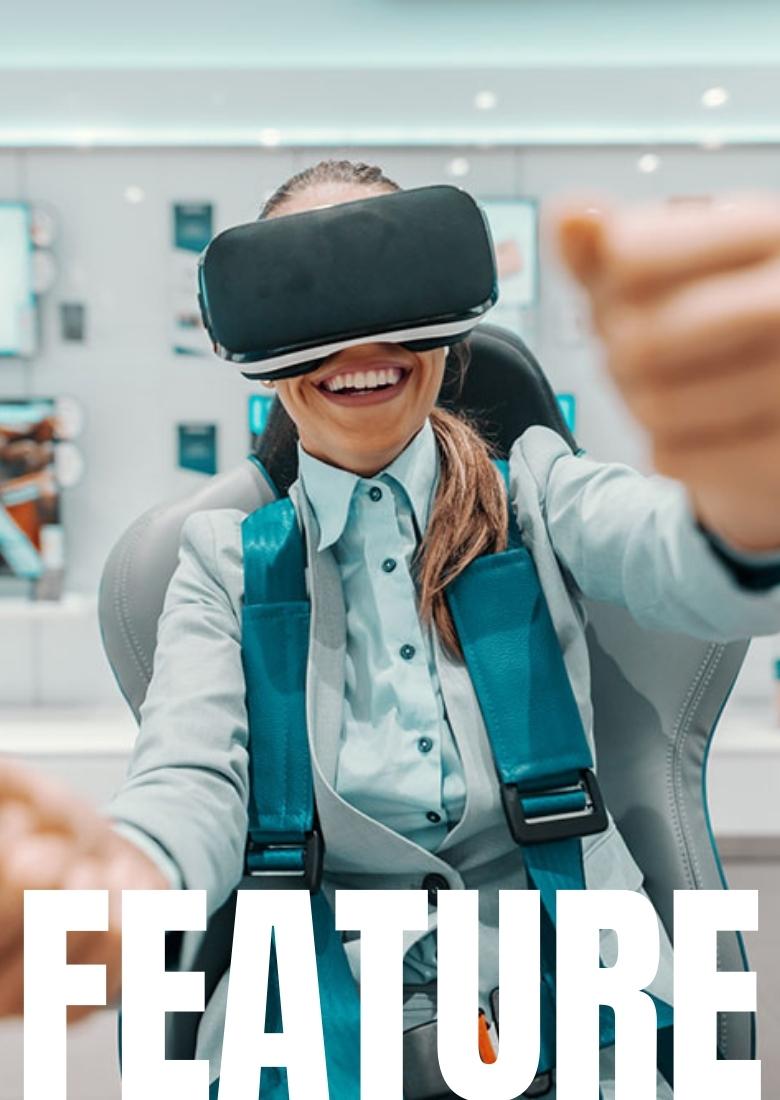

E-COMMERCE
The Post-Pandemic Reset: Reinventing the Retail Store
The pre-COVID playbook is dead.
Now is the time to try new models.
BY JOHAN LILJEROS
There has been tremendous upheaval in the retail landscape, and many brands are realizing that their pre-pandemic commerce playbook is outdated.
As consumer electronics and appliance brands enter their third year of navigating the global pandemic, there are more questions than answers. To what extent will customers return to physical stores? What type of physical stores will consumers want to visit, as e-commerce is growing exponentially and becoming hyper-convenient? How should omnichannel retailers use their physical store assets? And what will the future hold for the digital e-commerce customer experience?
Now is the time to experiment with new models to better meet post-pandemic customer expectations.


The Reimagining of Brick-and-Mortar Stores
While digital commerce has accelerated over the past few years, brick-and-mortar stores are still relevant and in fact, key assets in omnichannel digital transformation. According to the 2022 Gartner CIO and Technology Executives Survey, most retailers are planning to boost spending on store technology, increase store counts, and experiment with new formats as part of their digital business transformation efforts.
A recent survey by Allstate Protection Plans revealed that 46 percent of respondents still preferred to research and purchase home appliances in-store only — with only 20 percent choosing to shop and purchase online only.
According to management consulting firm McKinsey, in the late 1980s and early 1990s, the undisputed disrupters in the retail industry were “category killers:” large retailers such as Best Buy that carried a deep assortment of goods within a specific product category. Their winning strategy? Offering consumers an extensive product selection, competitive pricing, and convenience.
However back then, most consumers – inexperienced in e-commerce – were merely leveraging the power of the Internet to seek out the best price. Other online shopping “values” were trusted interactions and convenience. As a result, our early experiences with e-commerce contributed to the growing consumer proclivity toward “one-stop-shop” general merchandise retailers such as Amazon over more focused category destinations.
McKinsey’s recent research, however, indicates that consumer expectations are dramatically changing. While price and convenience are still key considerations, customers are increasingly weighing them against a desire for competence in specific categories and customer experience. Per researchers, this dynamic is especially true for categories that are highly fragmented, or in which advice to customers plays a large role in the path to purchase — such as furniture, do-it-yourself (DIY), apparel, pet care, and even more concentrated categories such as consumer electronics.
Net-net, by addressing these shifting buyer dynamics, brick-and-mortar retailers can become destinations, blending the best of offline and online value propositions to differentiate themselves from Amazon, online marketplaces, and other pure-online players. But transformation is necessary; brick-and-mortar retailers now must shift from being an offline brand with an online presence to becoming those with a truly omnichannel go-to-market model.


New In-Store Models Gaining Traction
What does this transformation look like for consumer electronics and appliance brands and retailers?
Having a channel-less customer journey is key. It’s important to note that a customer journey that may have started digitally now seamlessly can continue in the store or continue from the store digitally. Digitizing the inside of the store provides the same shopping convenience the consumer has when shopping digitally from their own home and can also streamline in-store processes – such as eCheck out. This gives consumers and associates more time to engage at other key points in the shopping journey that are more interpersonal and less transactional.
Another in-store model that is trending is something I like to call Department Store 2.0. Think of this as a giant showroom that provides consumers with hands-on product experiences and for retailers, with the ability to quickly set up marketplaces where brands and products can quickly be changed due to trends, seasons, or other outside factors. Agility is key here, which is supported by digital.
One retailer in the appliance and electronics space that is moving toward the Department Store 2.0 concept is Abt Electronics. The staff is extremely knowledgeable, and inside its 880,000-square-foot store, consumers will find various brands and pop-up stores of new and trending items, so the merchandise is always fresh and exciting.
At the convergence of brick-and-mortar and digital commerce channels, livestream shopping can be a powerful tool to reimagine and better utilize the brick-and-mortar store fleet while creating an immersive omni-channel experience for customers. It can be an effective means to drive traffic to stores; retailers can utilize stores as last-mile delivery hubs, expert hubs, and, of course, as traditional stores where customers can get a hands-on experience with merchandise.
Livestream shopping can be a tool for engaging and building loyalty on a whole new level, as it adds something that e-commerce always missed — the personal and expert touch to the customer journey.
Success from first movers with new retail channels and approaches will finally push those brand holdouts to move forward with unified commerce strategies to align the business.
Experience needs to be a pervasive thought throughout the buyer journey. Don’t forget about fulfillment – there are significant opportunities to win that revolve around getting the product into customers’ hands. There are small things retailers can do to elevate the experience, such as having a return shipping label already in the box (for effortless returns), or a personal thank you card (i.e., “packed by Simone”) included with the product for that added touch of sincerity. For luxury brands, this could mean high-end packaging.
We are seeing sweeping changes in consumer buying behavior – both online and in-store. Now is the time for big, fundamental shifts in the way brands do business. The most successful brands will be those that realize there are learnings to be had from the pandemic regarding digital, but that also recognize customers want to come back to stores. However, these stores must be more
adaptable and agile.
It’s time to throw out your pre-pandemic commerce playbook to forge new forward-thinking approaches to capitalize on this opportunity and gain newfound relevance in the post-pandemic era.
About the Author
Johan Liljeros is General Manager
and Senior Commerce Advisor, North America,
at Avensia.


CAMERA TRENDS 2022
Back to the Future
As digital cameras get more versatile and feature more powerful, cutting-edge sensors, the classic film camera is suddenly in demand again.
By RICHARD BAGULEY
COVID has made things tough all over, but boom times could be ahead for digital camera makers and retailers. The research company IMARC claims that consumers spent $7.3 billion on digital camera products in 2021, but that this will increase to 9.4 billion by 2027. This boom is being driven by one thing: innovation. Manufacturers are competing with cutting-edge features that put them ahead of the market. The latest digital cameras for consumers are “all-singing, all-dancing” devices that are as comfortable shooting video as they are still images, with an increasing range of features that can save photographers from their own mistakes.
That’s thanks to new technologies like stacked sensors, where the image sensor is created in two layers: one to capture the light and one to read this data off, and send it to the image processor. These two parts are then stacked together to produce the final sensor, and that combination means that the sensors are more sensitive and can take pictures faster. Camera manufacturer Nikon has recently demonstrated a new stacked sensor that can capture more than a thousand frames per second of 4K video.
Image sensor technology doesn’t stand still, though, and the next sea change may be the appearance of quantum dots in digital cameras. The same quantum dots used in modern TVs can be used to capture light as well as produce it. The advantage is that these are more sensitive to light than the photodiodes on current sensors: Fewer quantum dots are needed to detect the same amount of light. That could mean thinner sensors, smaller individual pixels, or even faster sensors with higher resolutions. Plus, a quantum dot sensor might not require the filters that current sensors need to separate the primary colors of red, green, and blue. Last year, South Korean researchers demonstrated a way to tune layers of quantum dots to respond to the entire visual light frequency, creating a single-pixel sensor that can see all of the colors that the human eye can see.
The problem is that these more powerful sensors are proving to be hard to make. Although quantum dot industrial cameras that can detect specific wavelengths have been around for several years, the technology has proven harder to tweak for more general use. That is changing, though, and it now seems likely that consumer cameras using these dots will be here within five years.
In the meantime, what are the new models on the market that show how these innovations are being sold? Let’s take a look at three new cameras that have just launched that show how the market is moving.


The King of Still and Video
Panasonic LUMIX GH6
Price: $2199 (body only)
Still Image Megapixels: 25, up to 14 FPS
Video: 4K, up to 120FPS
Lens Mount: Micro Four Thirds


Digital cameras have to do more than just take pictures; they need to shoot video. That has usually been a compromise, but we are now seeing cameras that can shoot both with equal alacrity. The latest contender for the title of king of all media is the Panasonic LUMIX GH6, which shoots 25-megapixel still images and 4K video. The GH5, launched in 2017, could only shoot for a few minutes before the sensor overheated. The GH6 includes a fan to cool the sensor, which means the only limit on the length of video recording is the size of the CFExpress memory cards it uses. It can also capture slow-motion 120-frames-per-second video in 4K resolution.
The GH6 does not offer a big megapixel increase over the GH5, though: the GH6 captures 25-megapixel images, only a 5-megapixel upgrade. That’s because the small sensor size of Micro Four Thirds cameras (just 13.5 by 18mm) leaves little room for squeezing in more pixels. Instead, the big increases in resolution are coming from cameras with more room for bigger sensors.
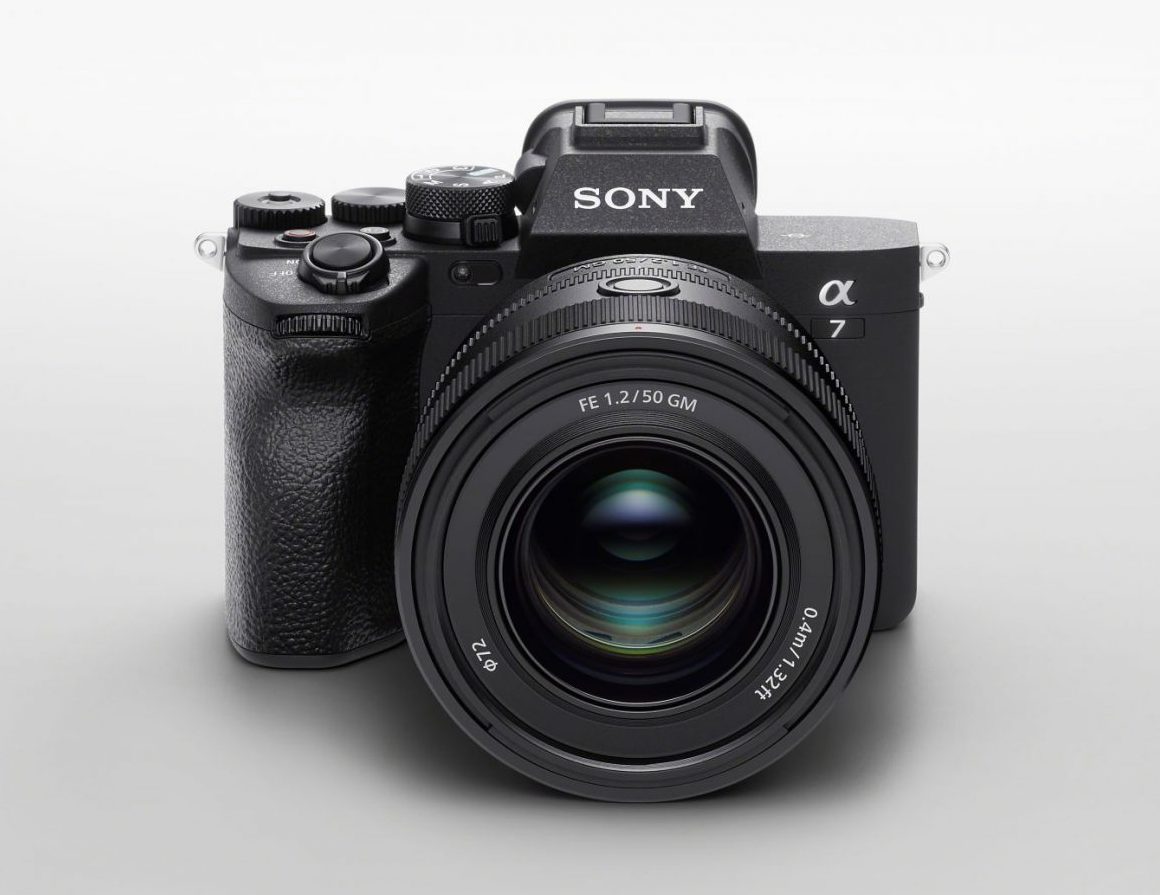

The Megapixel Master
Sony a7 IV
Price: $2,499 (body only)
Still Image Megapixels: 33, up to 10FPS
Video: 4K, up to 60FPS
Lens Mount: Sony E-Mount
The fourth iteration of Sony’s midrange A7 shoots huge 33-megapixel images at remarkable speed: up to 10 frames per second. This full-frame camera (so-called because the image sensor is the same size as a 35mm analog film image, 24 by 35mm) uses Sony’s own E-Mount lenses to shoot both still images and video.
Sony says that the a7 IV takes many design and technical cues from their professional camera range, particularly the a1, their $7000 50 megapixel flagship that can shoot up to 30 frames per second. The a7 IV is nowhere near as expensive or as fully featured as this monster camera, but it does show how technology works its way down from pro to consumer models.
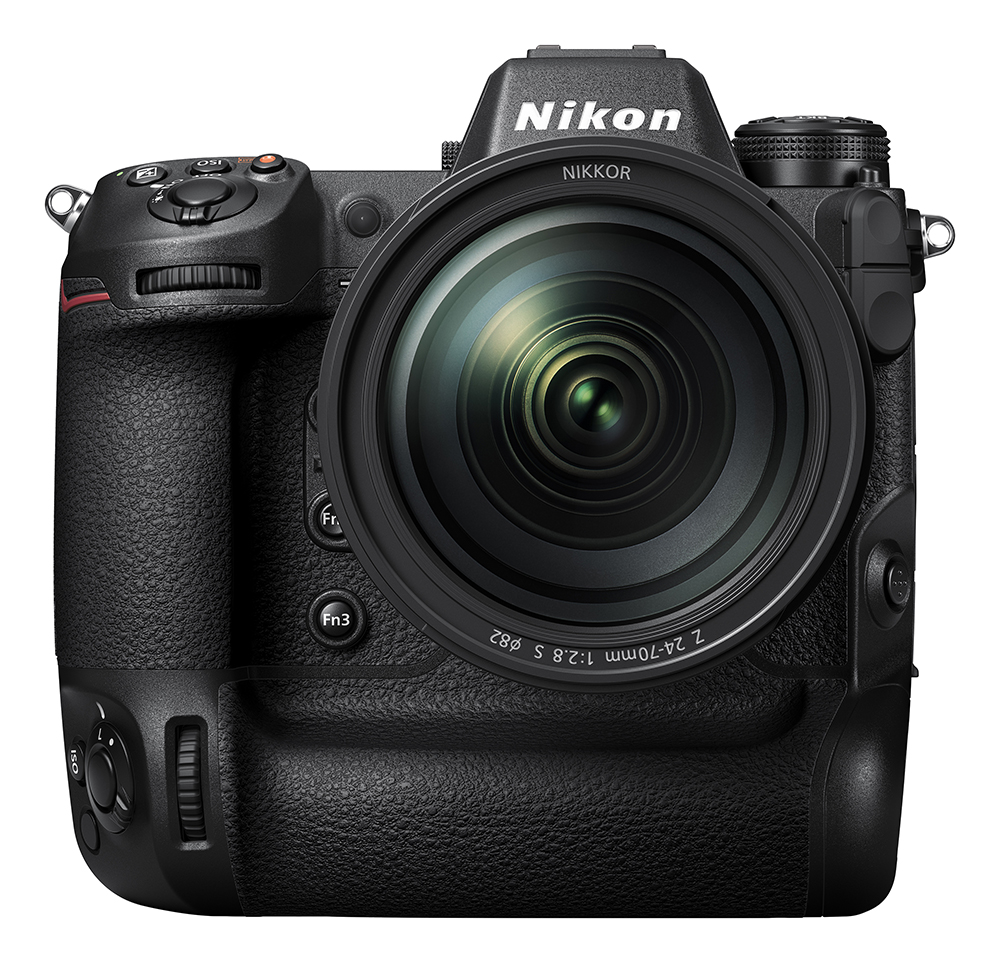

The Pro Package
Nikon Z9
Price: $5500 (Body only)
Still Image Megapixels: 45.7, up to 20FPS
Video: 8K, up to 30FPS
Lens Mount: Nikon Z Mount
Nikon’s latest flagship camera is the Z9, a powerhouse package of features aimed mostly at professional shooters. It uses a stacked sensor that provides incredible speed at reading off the huge amounts of data that 45-megapixel photos require: it can capture up to 20 frames per second at this very high resolution.
While this camera remains beyond the means of most consumers, it boasts one feature that will make its way onto cheaper cameras in the next couple of years: 8K video recording. This ups the video resolution to 7,680 by 4,320 pixels, producing four times the resolution of 4K video. This will remain a high-end feature for the moment, though: although 8K TVs have been available for a couple of years, they are not yet mainstream, and shooting 8K is a hard sell to consumers if they can’t play it back in the living room. However, 8K TV in the home is coming, and cameras like the Z9 show that the digital cameras will be ready to capture video for them when it arrives.
Ready For Its Close-Up Again
Traditional film photography is back.


While digital cameras are getting more sophisticated, some photographers are going low tech. Film photography is making a comeback, with many users swapping their digital sensors for analog film. This is more than just a nerdy niche; the analog photography section of Reddit has 1.7 million subscribers.
Why are these consumers going back to a medium that many thought was dead 20 years ago? In a word: control. Modern digital cameras are increasingly making all the decisions for you: they automatically tweak settings, apply filters, and process the image in ways that can remove user input. With an old-school film camera, the photographer is completely in control of how the image is captured, developed, and printed. It’s all down to the skill of the photographer, not the algorithm that saves a poorly exposed image.
This could create an opportunity for dealers and retailers. While we aren’t likely to see new film cameras from major manufacturers, film itself is needed by this new generation of analog photographers. The market is here already; the past few months have seen steep rises in the cost of film, as demand has outstripped supply: a pack of two rolls of the classic Ilford HP5+ black-and-white film listed for less than $20 last year, but now sells for over $25. Although the film market is dominated by classic brands, it features new films from companies such as Adox. –RB


SUSTAINABILITY
How to Create a Sustainable Path to Smart Home Growth
The smartphone industry offers lessons to retailers in increasing customer loyalty through green initiatives.
By JEFF UNTERREINER, President, U.S. Connected Living, Assurant


The long-awaited promise of the smart home is finally on the way to becoming a reality. Spurred by the pandemic and the need to work and learn from home, more people are buying connected products for necessity and convenience. Advances in 5G and other technologies are likely to further spur the growth of new connected devices in the home.
While these are great catalysts, there is the question of how to responsibly sustain this growth, as people begin to replace older electronics with newer models. What happens to the used products when customers buy a new model?
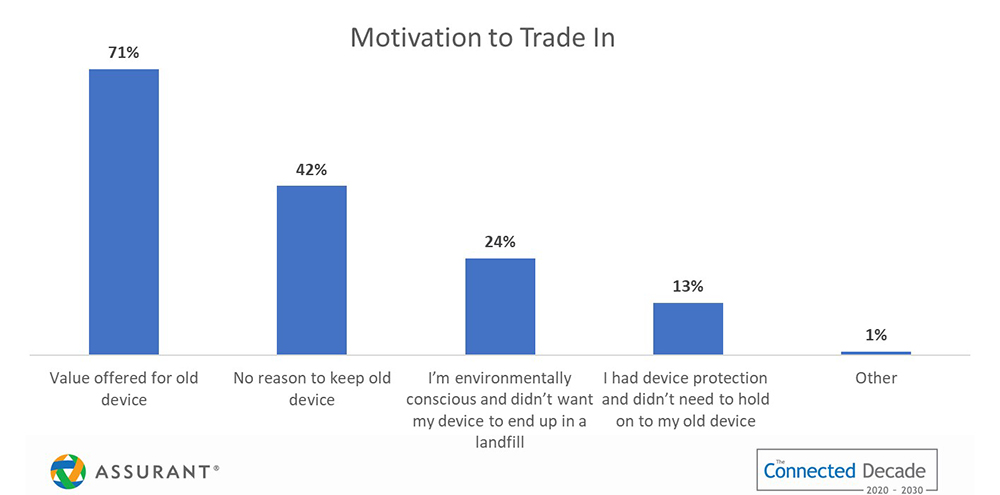

The smartphone industry can offer some lessons, as it has faced similar challenges. Many people keep their old smartphone as a backup in case their new product malfunctions, is misplaced, or is stolen. This results in the device being placed in a drawer and forgotten, and then eventually thrown into a landfill where the batteries and other parts can harm the environment.
The environmental impact of used products increasingly is becoming important to consumers. Consumer research by Assurant shows that 85 percent of smartphone owners would have a more positive opinion of a mobile carrier if the company focused on reducing the amount of waste that goes into landfills. Clearly, retailers that can offer a similar commitment stand to increase customer loyalty.
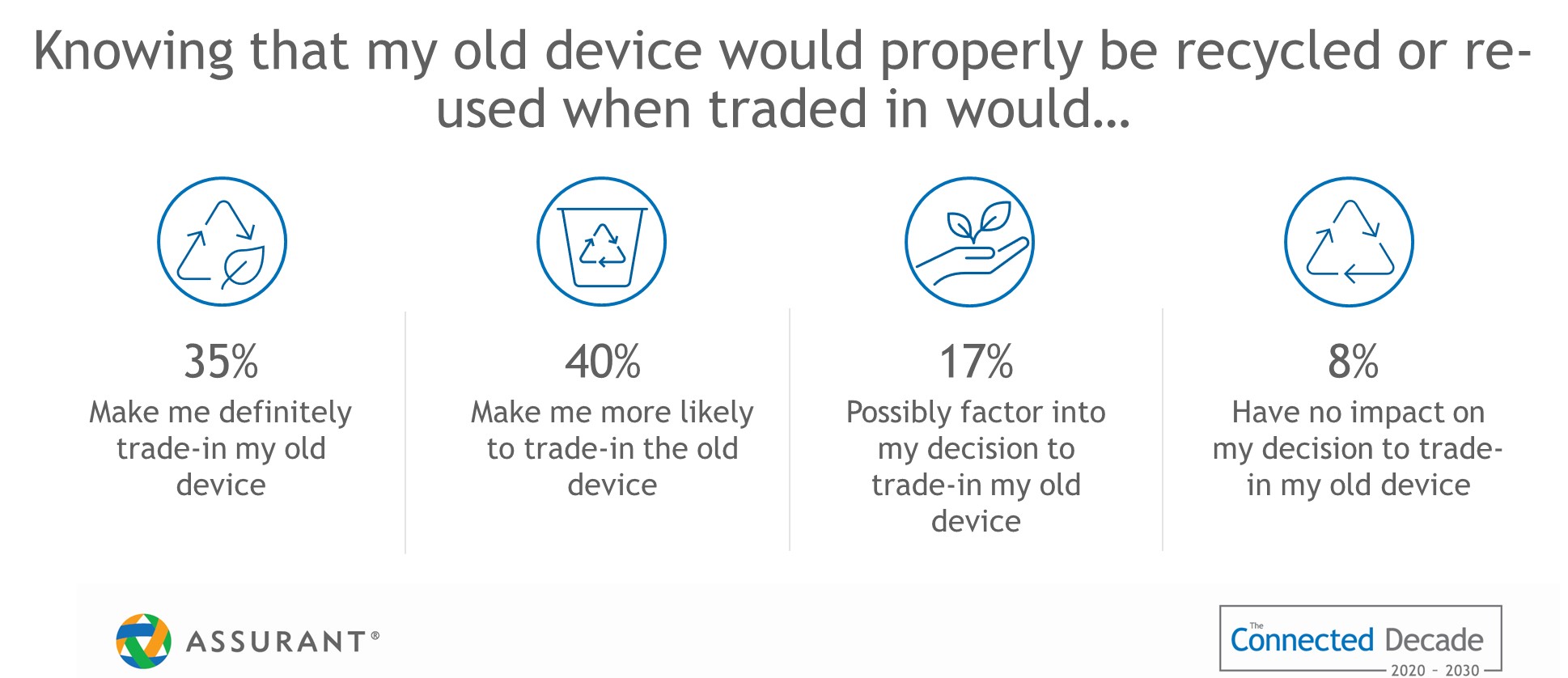

A Comprehensive Solution
Sustainability doesn’t come into play only when a product becomes old. A comprehensive solution starts on the front end when customers start the purchase process, and continues through the end of life of the product. It touches on technical support, trade-in offers, upgrade programs, asset disposition capabilities, and recycling.
For any connected product, providing a premium support experience is vital in today’s world. When looking at services that positively impact purchase intent, Assurant research shows that between 2019 and 2021, consumer desire for tech support jumped 44 percent, reflecting the need for help with installing, connecting, and using connected products.
But support can also be an entryway to a better environmental outcome. Knowing what existing connected products are in the home, and which ones are malfunctioning or becoming out of date, can lead to providing guidance on what to replace, and a trade-in offer for the used devices.
In the wireless industry, trade-in programs are proving to be a great incentive to upgrade smartphones, as they make purchasing new devices more affordable. They can also give consumer electronics a second or third life, providing connectivity to many around the world who may not otherwise be able to afford it, while reducing e-waste.
These programs can handle a variety of consumer electronics, including tablets, hearables, wearables, smart hubs, laptops, or video game systems. Knowing the right way to optimize a trade-in program, though, is vital to unlocking the potential for success.
According to Assurant research, the majority (71 percent) of smartphone owners who have traded in their mobile devices in the past were motivated by the value offered for their devices. Relatedly, 76 percent of those who did not trade-in their device said either they weren’t given the option to trade-in (39 percent) or the value offered wasn’t significant enough (37 percent).
Determining the right value to offer for a used device is best done by leveraging machine learning
with real-time data to create an effective pricing engine that works at the point of sale, providing an offer at a price point that is compelling enough to stimulate trade-in while maintaining margins.
Another factor that can impact trade-in activity is consumer awareness of what happens to their traded-in product. Three quarters (75 percent) of consumers would be likely to trade in their device if they knew it would be properly reused or recycled, and 64 percent would accept a lower amount than originally expected.
Once a consumer accepts a trade-in offer, asset recovery programs can find new users for the products, creating additional revenue streams. Using an efficient reverse logistics platform, retailers can resell the traded-in products in secondary markets quickly to maximize value and avoid depreciation.
End-of-life devices that cannot be reused or resold can be recycled. Over time, the results of these efforts can be significant.
For example, between 2009 and 2021, Assurant’s collective sustainability efforts resulted in:
- 20,412 metric tons of e-waste redirected from landfills
- 100 million mobile devices repurposed for extended use
- 1.5 million devices recycled with precious metals extracted
- Improved connectivity of tens of millions of people
- Offset CO2 emissions for 5.5 million metric tons


TECH TOYS
Top Tech Toys
We tried out a few new kid-focused STEM learning devices. Here are the ones we liked best.
By EGON SANDERS
As is the case across many areas of consumer electronics, we’re in the midst of a golden age for kid-focused STEM learning devices. The miniaturization and broad availability of small, connected components have enabled a wide ecosystem of toys that (stealthily!) teach kids about the world of science and technology. These include everything from programmable robots and audio synthesizers to playgrounds for understanding electronic circuit design and botany. We’ve rounded up what we think are some of the most exciting ideas out there.
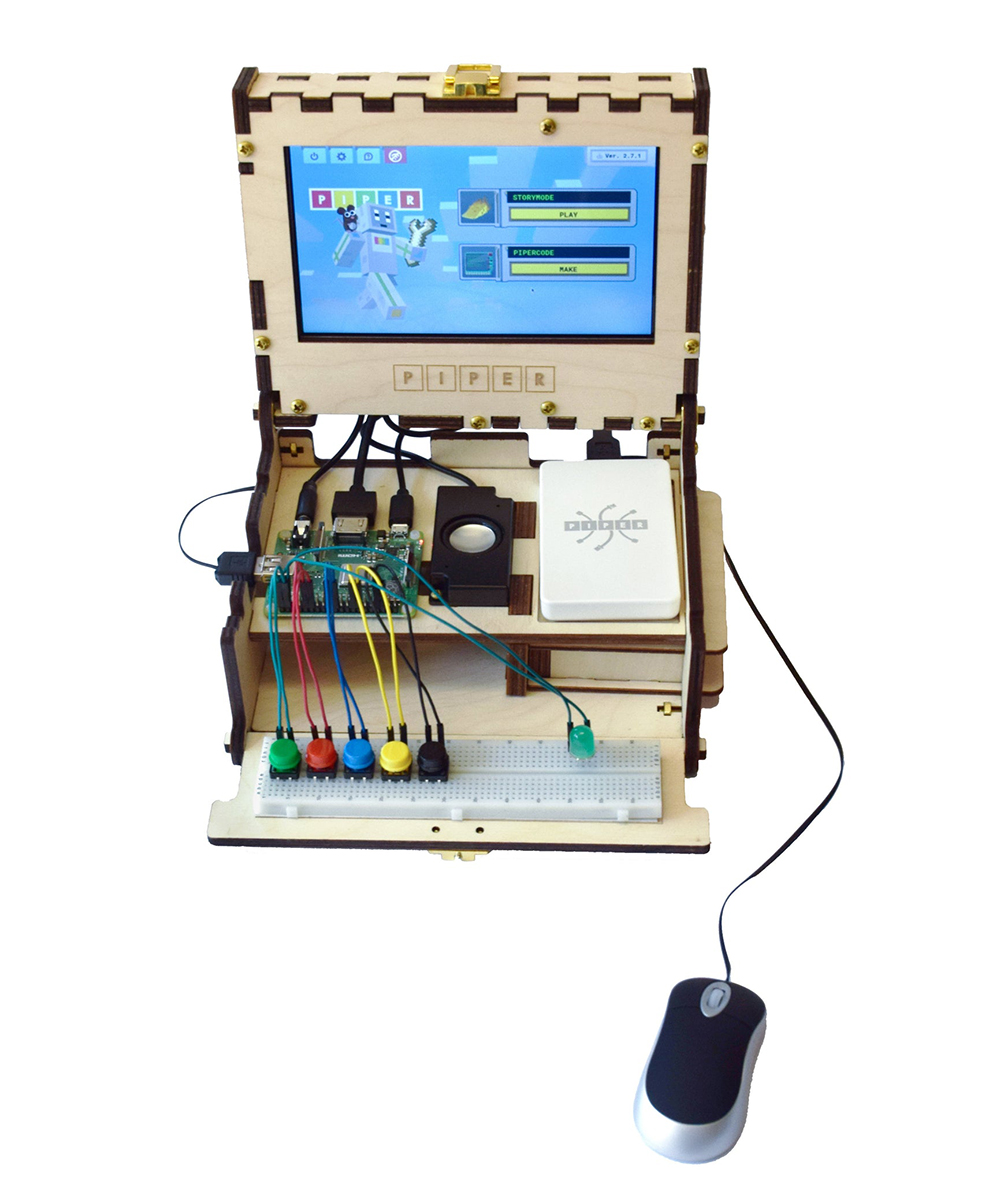

Piper’s Computer Kit 3 is the company’s latest build-your-own-computer, designed to help kids learn about computing in a more immediate, hands-on way than plopping down in front of a traditional laptop. Running on a Raspberry Pi A+ and inside a laser-cut wooden enclosure, the process of building the hardware is just the beginning of the journey. Among the included software is StoryMode, in which kids are guided through various missions, attaching wires and connecting electronic components to move around an immersive world. A good way to get kids in the door? They’re able to play through a series of challenges using a Raspberry Pi version of Minecraft to learn problem-solving skills.
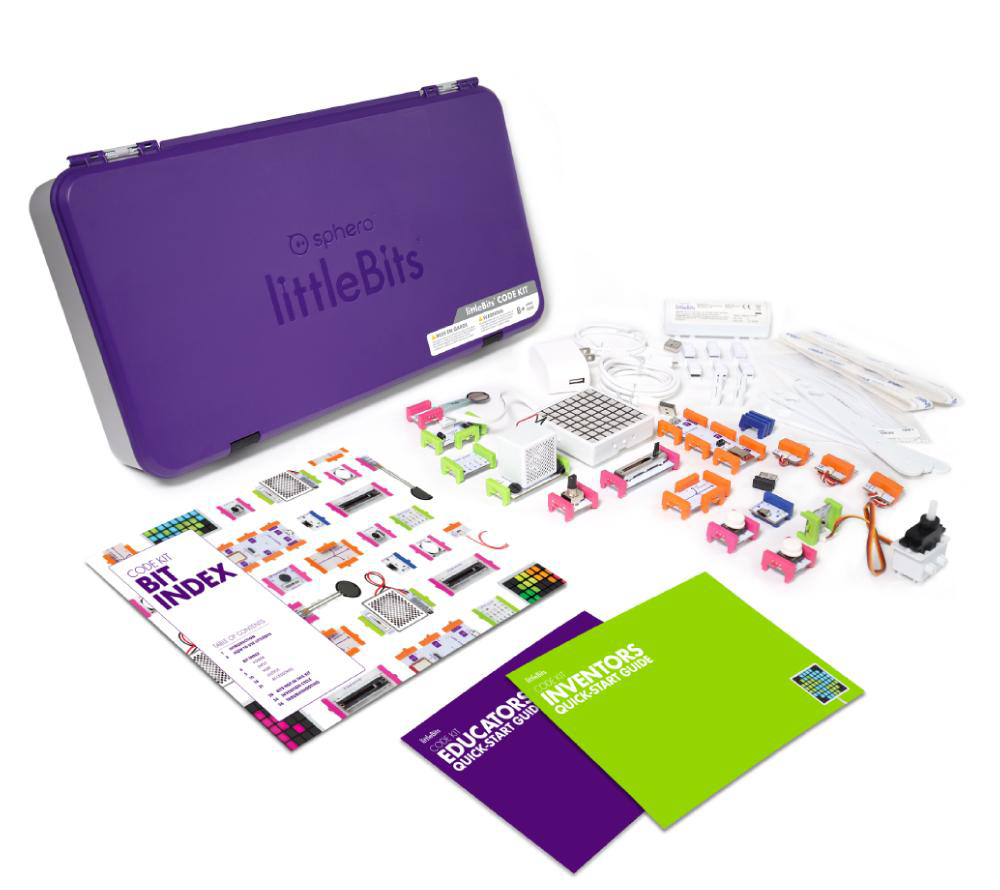

Sphero’s littleBits Code Kit is designed to teach children the fundamental principles of code. Kids are walked through programming and engineering concepts by snapping together the magnetized building blocks for things like buttons, dimmers, speakers, and servo motors. The littleBits Fuse app then lets them program these blocks using simple functions, which can then be used to further enhance their functionality.


A rather advanced modular robot construction kit, ClicBot can be endlessly reassembled into various configurations. Robots can be designed to perform various things with a claw with actions such as walking, rolling, or grabbing. Motion sensors let it respond to gestures, while suction cups on the feet even let it climb walls. The kit comes with instructions for making about 30 robot variations, but these can be mixed and matched as well to create a broad range of robotic possibilities. It’s designed for kids ages eight and up, but the depth and flexibility mean parents will learn to flex some creative muscles as well.
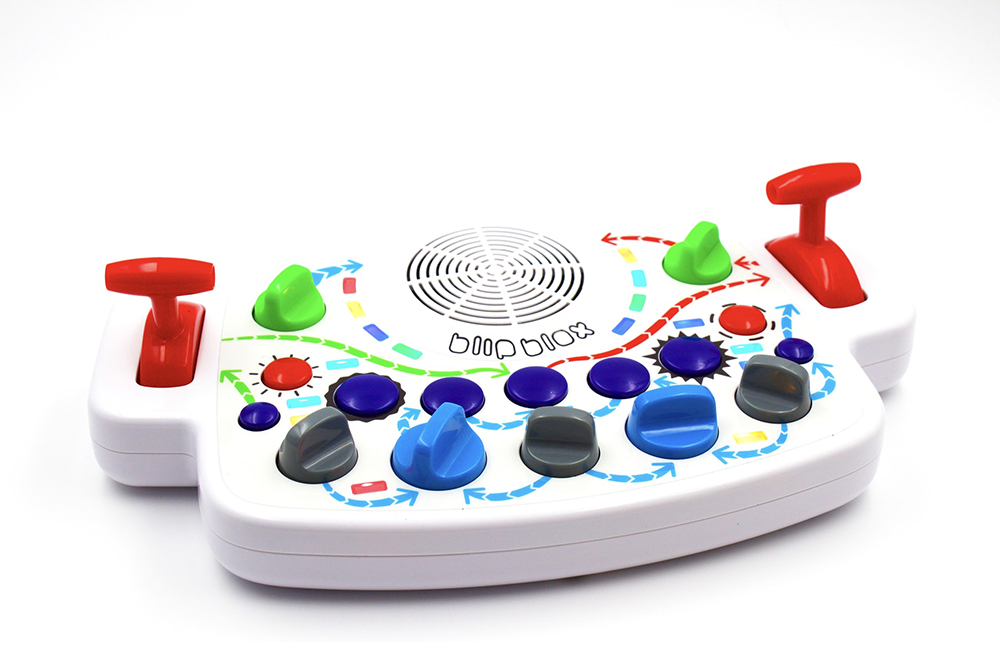

Though it might look like a typical baby noisemaking box, Blipblox is a full-fledged audio synthesizer, designed with durability in mind for kids as young as three years old. Each of its colorful control inputs is designed to teach them how they’re modifying the sound, while synchronized LEDs provide visual feedback synced with the music as it’s being generated. Oscillators, filters, envelope generators, and LFOs — the building blocks of audio synthesis — are all on offer, while a MIDI input even lets kids play it with an external keyboard.
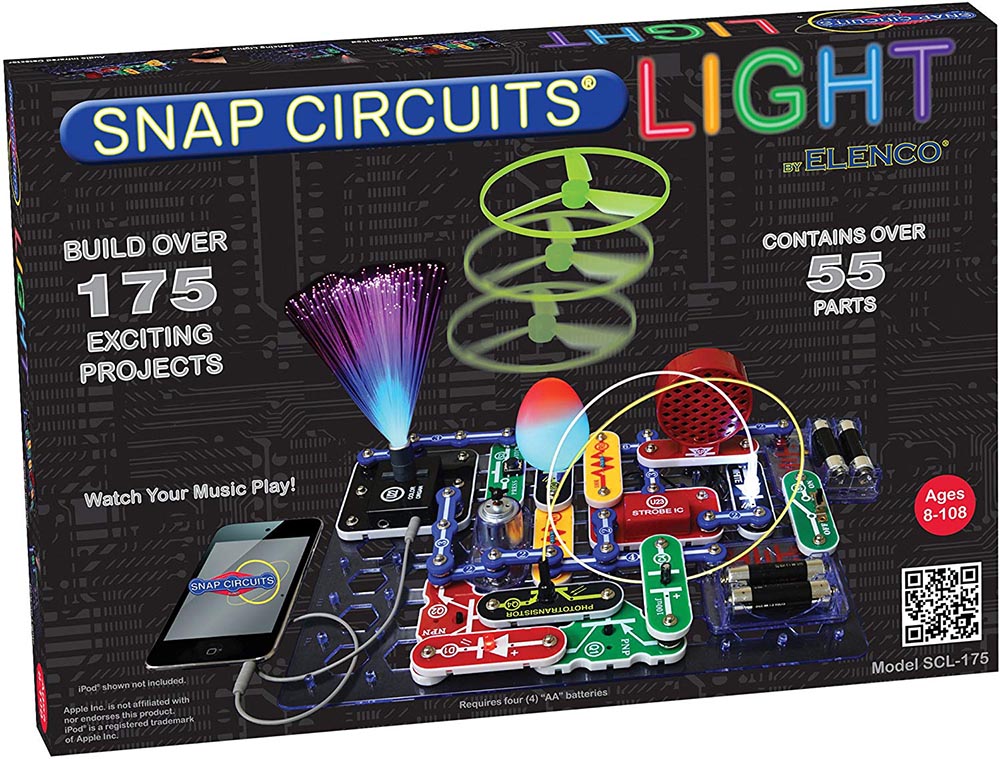

A more affordable electronics playground, Elenco’s Snap Circuits Light contains a circuit board, a bevy of components, and a manual with over 100 creative engineering projects. Switches can be used to light up parts of the board or play music from a speaker, or even start an electric fan a-whirling. All of the pieces snap together on the included plastic grid (read: no soldering), and pieces are numbered and color-coded for easy project planning. Designed for children age eight and up.


Educational Insights’ Circuit Explorer Rocket teaches kids the fundamentals of circuitry, through the lens of space travel. The kit includes the pieces required to build a rocket with light-up nose cone and nozzles, a rover with headlights, and a landing pad with color-changing lights. Like other products, it’s a no-solder experience, and is designed for kids age six and up.
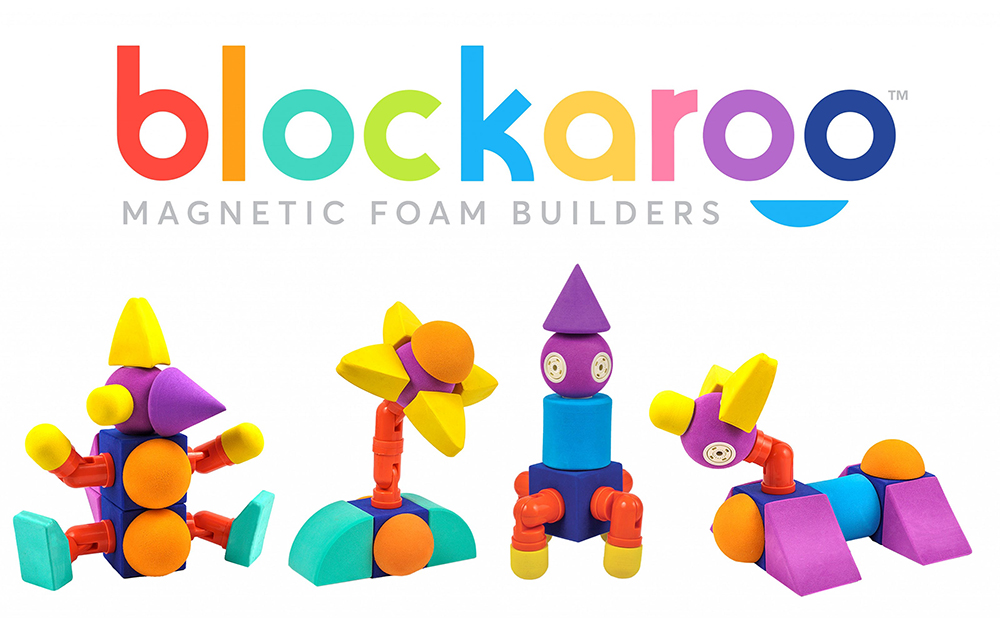

Though less “tech” than some of the other products included here, Blockaroo’s Magnetic Foam Building Blocks are no less fun. Essentially, they all click together and rotate 360 degrees, allowing for a wide range of creature and structure designs. The innovative magnetic system allows all of the blocks to connect and never repel, and they’re even bath-safe for those kids interested in making boats and sea creatures. For early-age STEM learning — the blocks are designed for children age 18 months and up — they provide a range of colorful, creative possibilities. Kits range from $19.99 for a helicopter set to $129.99 for a 100-piece chest.
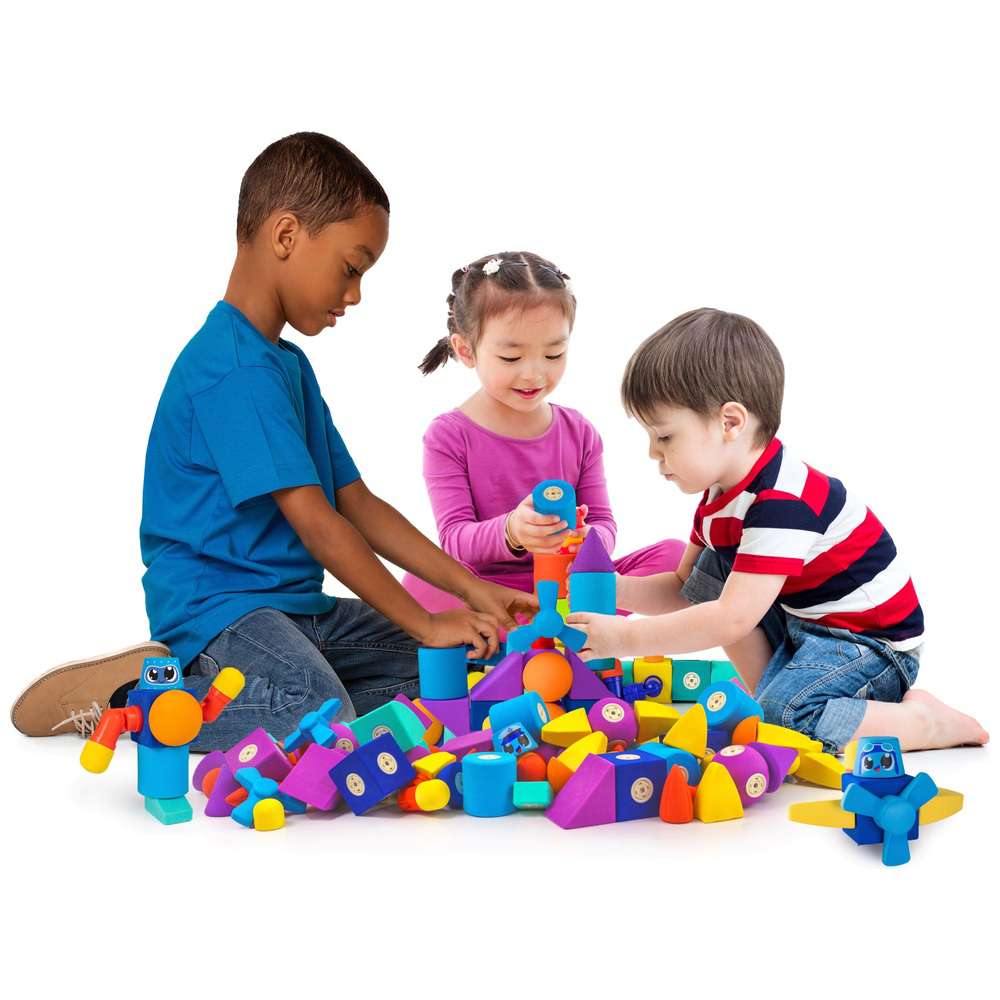

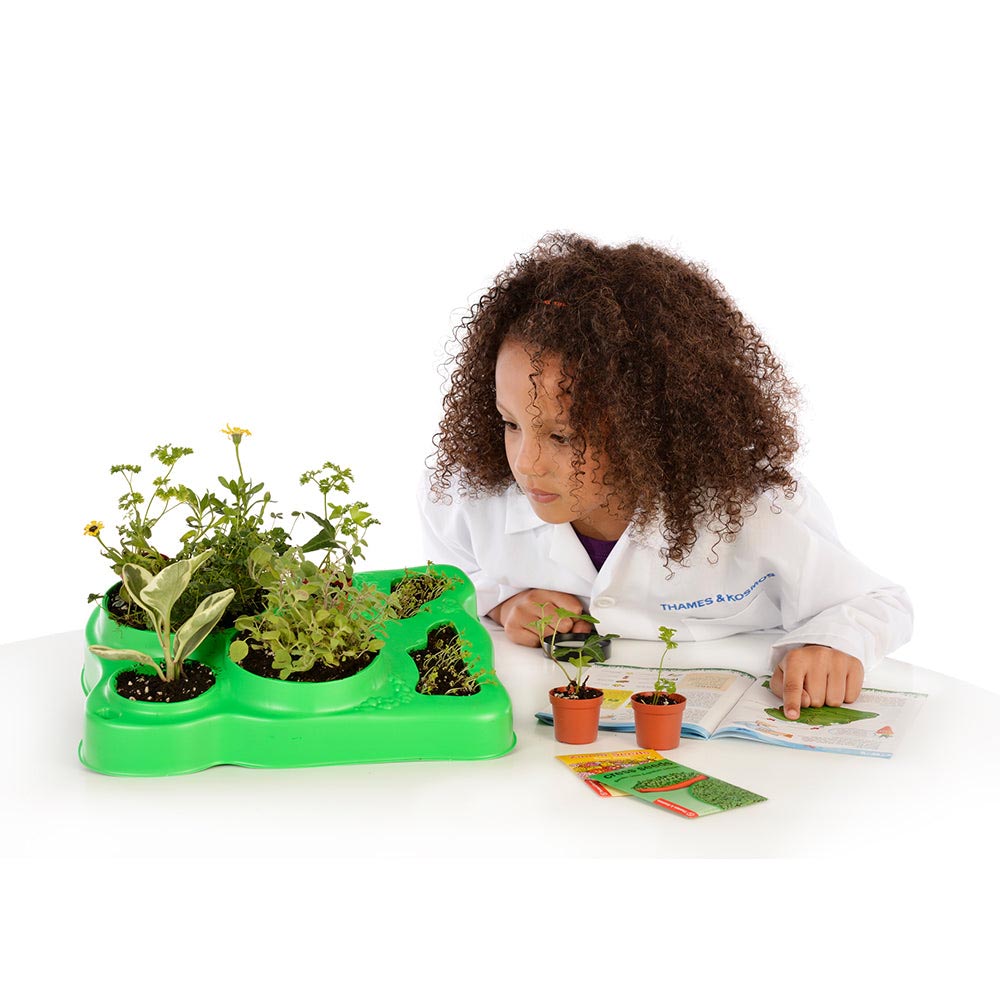

For the curious botanist in even the youngest of us, the Thames and Kosmos Experimental Greenhouse Botany Kit helps kids learn about plants and seeds by letting them conduct micro experiments inside a miniature botanical lab. The greenhouse dome comes complete with thermometer and ventilation, as well as a DIY automatic watering system to keeps plants lush and healthy. Kids will learn how roots transport water and nutrients to the plants, and how light and heat are essential for growth. The kit comes with seeds to grow beans, cress, and zinnia flowers, or add your own to expand its repertoire.


Osmo’s STEM starter kits use your existing iPad or Amazon Fire Tablet to empower kids to engage with engineering, art, math, and reading. Each kit comes with its own connected base for a tablet to rest in, along with a number of connected objects — moving number tiles, drawing surfaces, tangrams, coding blocks, and more. Kits are designed for kids of various ages (starting at three and going up to 12 years of age), and include subjects ranging from geography and literacy to science and coding.


Though not exactly STEM-focused, Picoo’s pitch is compelling. The company has dubbed it a “screenless game console”: essentially a controller about the size and shape of a small stage microphone, designed to get kids playing together outside. The starter kit comes with five games, which include classics like Whack-a-mole and Hide & Seek, but also new concepts like Lightning Bolt, where players are tasked with catching bolts with their device, and Zombierun, in which players run around looking for zombies. The Picoo uses a combination of sound, vibration, and Nintendo Wii-style motion controls to simulate basic actions. In a clever way of avoiding “the least popular kid getting picked last” situations with team-based games, the Picoo automatically groups players together into teams. The device made its debut at CES 2022, and is shipping now: a Picoo starter set costs $250, and includes four controllers and five games.


WEBCAMS
The Modern
WebCam Feature Menu
Whether making recommendations to your customers or choosing the right device for your own purposes, here’s how to identify the right videoconferencing or livestreaming camera.
By STEPHEN HEYWOOD,
Product Evangelist, PTZOptics
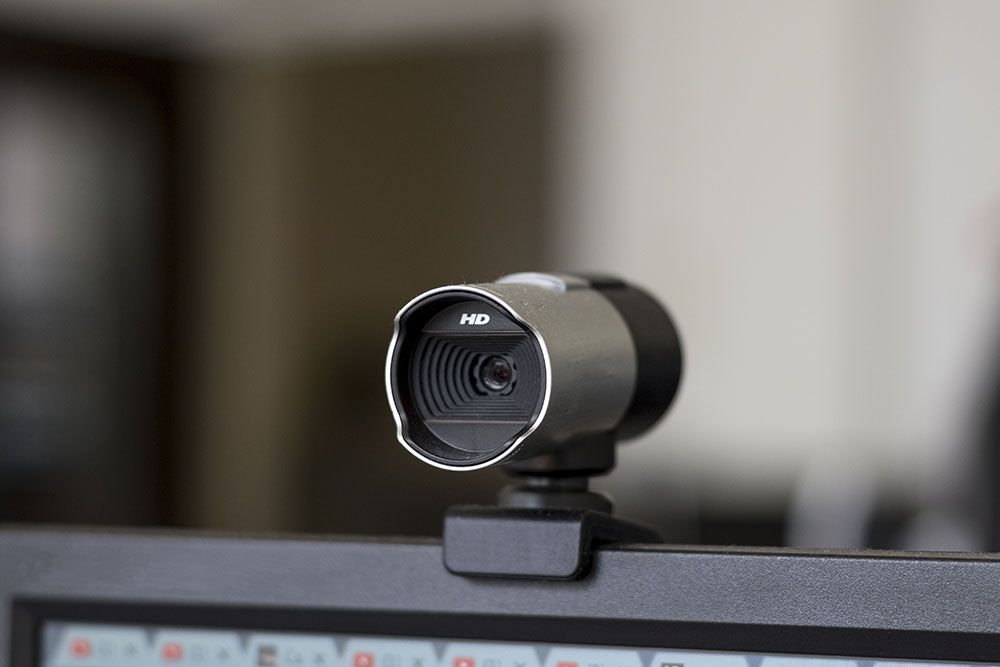

Webcams are available at a dizzying array of price points. That’s because, inside these seemingly identical little black rectangles, there is an equally extensive variety of feature options to consider. So what makes a great webcam? How do you make the best recommendations to your customers (or choose the right device for your own purposes)? It very much depends on the use case at hand.
First, let’s take a look at some of the features a user should consider before purchasing a webcam:
Resolution – This refers to the number of pixels a camera captures. Most webcams top out at 4K or 1080p resolution, but broadcast-quality cameras can go much higher.
Pan/Tilt/Zoom (PTZ) – This feature provides the ability to adjust a camera’s physical position or optical zoom. Users can zoom in and out, tilt the camera towards the ceiling or the floor, or pan from one side of the room to the other using a remote control, joystick, web interface, or other camera control device. Often used in medium to large spaces, PTZ cameras have an optical zoom lens, allowing users to zoom in on objects from dozens of feet away without any loss of resolution. PTZ cameras typically have a much larger format than traditional webcams, but PTZ cameras with USB interfaces are available and can be used as webcams.
ePTZ – electronic pan/tilt/zoom. An ePTZ camera mimics the features of a PTZ camera without any physical movement. Instead of moving robotically, an ePTZ camera captures a really high-resolution image, but outputs only the selected area. A user can output the whole area, or digitally “zoom in” to only a portion of the captured image. This results in loss of resolution, but because the resolution of the capture is so high (and the resolution of livestreaming or videoconferencing images so limited), this loss is typically immaterial to the output. Once zoomed in, the user can also “pan” across the capture area, or “tilt” from top to bottom. ePTZ cameras are often no larger than a typical webcam.
Presets – Many PTZ and ePTZ cameras can also be configured with presets, allowing the user to save favorite camera positions and recall them instantly with a remote control or other camera control device.
Autoframe – Some cameras with PTZ or ePTZ capabilities don’t require the user to lift a finger to find the best camera position. Autoframing cameras detect the position of any people in the camera’s view, and automatically adjust so that they are properly framed. If anyone leaves during the course of the conference or livestream, then the camera automatically readjusts.
Autotrack – Some people naturally move during presentations. Autotracking features are perfect for users looking to create more dynamic recordings. An autotracking camera automatically follows a subject as they move throughout a space.
Fine-tune capabilities – Some cameras are black boxes automatically choosing settings for their users. For many use cases, though, the user will want the ability to fine-tune and adjust camera settings that affect the brightness, contrast, and tone of their images, including such features as white balance, aperture size, shutter speed, and red/blue gain.
Does the average consumer need all these advanced features? Probably not — but they are likely to need some of them. For typical home office use involving occasional videoconferencing, a static high-resolution webcam with automated image settings is probably adequate. As use cases for streaming diversify, though, more features are required. Let’s examine three common examples: livestreaming, product presentations, and family conferencing.
Livestreaming
Livestreaming is a broad category. The features a user needs depend on what kind of streams they’re creating. Performance, dance, or even lecture-performances benefit from autotracking, allowing the subject to move around a space without ever leaving the frame. Gaming or confessional-style livestreamers may not need this option but might want PTZ and preset capabilities to give them multiple shot options from a single mounting position. Any serious streamer will want fine-tuning capabilities, allowing them to optimize white balance and maintain a consistent look for their content. When a customer says they want a camera for livestreaming, take an interest! Find out as much as you can about what kind of content they produce before making a recommendation.
Presentations and Product Demos
Product demonstrations, unboxing videos, and reviews have become an important content marketing strategy for many dealers – and a popular hobby or even profession among thousands of consumers as well. Creators are advised to select a camera with an ultra-high-definition capture card to create video content of this nature. These videos are likely to be edited after the fact, which means the user should start with the highest possible quality so that even cropped or filtered shots can be streamed at crisp high definition.
Fine-tuning capabilities such as the ability to adjust white balance, iris aperture, and shutter speed are also important for this use case: If any part of the video needs to be reshot, the user will want to recreate the appearance of the original lighting conditions and image as closely as possible.
For sophisticated users, ePTZ presets are a must. This feature allows the user to establish multiple shots – like a wide angle and a close-up – and toggle between them with a single remote button-press. Users can instantly zoom in on a product, then switch back to the demonstrator, creating a professional multicamera effect with a single webcam.
Living Room Conferencing
The world’s largest tech companies are betting that videoconferencing is going to move into consumers’ living rooms. New displays from Amazon, Samsung, and Google come with support for Zoom or Google Duo built-in, as does the latest model of Fire Cube. For families who’ve grown accustomed to connecting via videoconferencing over the past two years, conferencing-enabled TVs could offer a richer and much more comfortable experience than huddling around a phone or computer. Consumers must install a webcam to access this feature, though, and a standard device just won’t do.
Consider the typical distance between a user and their laptop screen or computer monitor. Now, think about the distance between a television and the couch. A normal webcam mounted on a television screen is going to capture way too much of the room; the people on the couch will make up a tiny fraction of the frame. Ideally, the subjects’ heads and shoulders should be visible, with about 10 to 15 percent clearance between the top of the subjects’ heads and the top bezel of the screen. Achieving that framing in a living room context requires a webcam with zoom capability.
Video conferencing services typically transmit video at a 1080p resolution. That means that a 4K webcam with ePTZ capabilities can zoom electronically up to 4X without any loss of signal quality for a 1080p conference. Of course, if you’re looking for a truly crisp image – or if the customer has a fairly large living room – you can achieve truly lossless capture at greater distances with optical zoom.
If you’re meeting one-on-one, you’re likely better off doing so using your computer or mobile device; the primary use case for a living room webcam is family videoconferencing. Participants are unlikely to sit tightly packed together, holding still in a single position. Kids will bounce around the room, and family members may enter and leave throughout the conversation. In a room with multiple seating options, even a single participant is unlikely to sit in the same position every time. For this use case, users will want the ability to not just zoom, but reframe – without having to manually adjust the webcam’s position. The user should be able to reframe any camera with PTZ or ePTZ capabilities using a remote, but presets – or better yet, autoframing – make this process a lot more convenient.
Cameras are becoming a more central part of consumers’ professional and family lives. Dealers pay a key role in helping them choose the right camera for the right application – and in the process, establish themselves as trustworthy experts for the customer’s next video venture.
SUMMARY:
- Webcams are differentiated by powerful advanced features, including PTZ, autotracking, and autoframing capabilities.
- The capabilities your customer requires depends heavily on the use case.
- Build product recommendations on your understanding of the customer’s space and intentions.
STAT SHOT
CE Industry By The Numbers
COMPILED BY SAM HITT
6.4%...
…faster was the growth in brick-and-mortar sales in 2021 when compared with eCommerce sales on a year-over-year basis.


47 million...
…people, which is roughly 30 percent of the American workforce, quit their jobs last year. This mass exodus from the labor market has led to staffing shortages at many major retailers.


$350,000…
…is the max base salary for Amazon corporate and tech employees. This move comes as Amazon looks to secure top corporate talent.


80%…
…of all shoppers and 92 percent of Gen Z shoppers are less likely to buy a product online if it has no reviews.


384 kHz…
…is the sound quality provided by the third-generation Alpine F1Status System, which allows users to enjoy studio-quality audio in the comfort of their car.
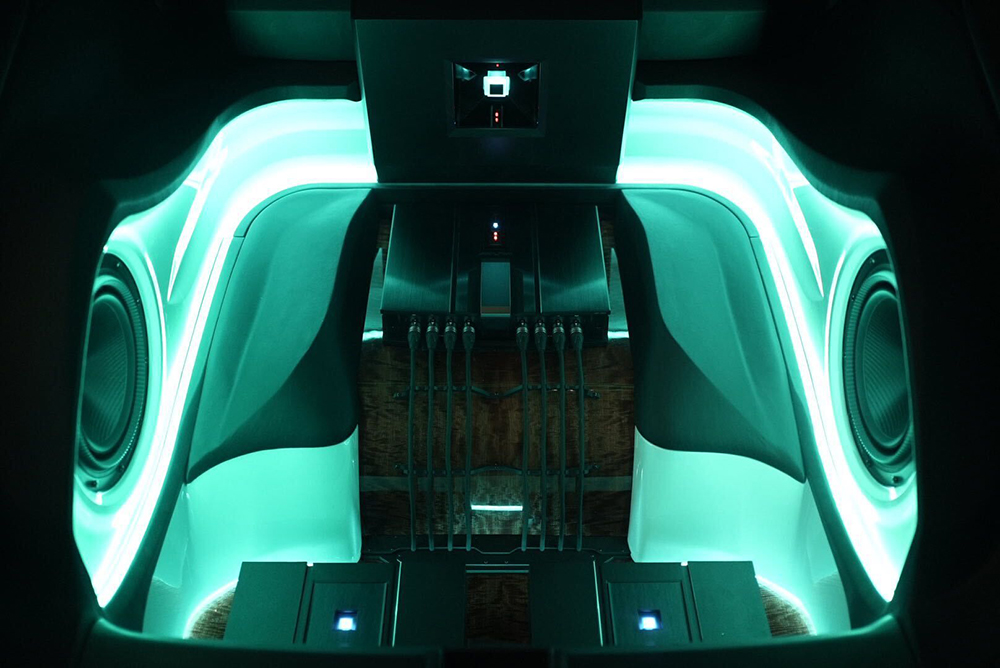

DEALERSCOPE PODCAST
Welcome to the Dealerscope Podcast – Your Source for all B2B trends in Retail, Tech and Biz!
In the high-strung consumer electronics retail business, it can be hard to take a moment to step back and breathe. The Dealerscope Podcast gives CE retail leaders the chance to kick back, relax, and talk shop in a casual setting.
Get Dealerscope
and Connected Design
delivered to your doorstep
or to your email.
Click on the links below to update how and where you receive your issues! Change your mailing address or request a change from print to digital, subscribe to our newsletters, or just head to our websites.
CONNECTED DESIGN
Subscribe to Print Magazine
Renew Your Subscription
Subscribe to Newsletters


OFFICES
100 S. Juniper St., 3rd Floor
Philadelphia, PA 19109
132 West 31st Street, 9th Floor
New York, NY 10001
EDITOR IN CHIEF
Tom Samiljan
tsamiljan@ctlab.media
CT LAB EDITORS
Sam Hitt
Erinn Loucks
CONTRIBUTORS
Richard Baguley
Stephen Heywood
Nancy Klosek
Mike Kobrin
Johan Liljeros
Elizabeth Parks
John R. Quain
Egon Sanders
Stephen Silver
Jeff Unterreiner
Eric Wagatha
CREATIVE
Astrid von Krenski
(940) 727 8595
avkrenski@ctlab.media
CHIEF SOCIAL MEDIA AND WEB EDITOR
Brenda Thelusca
(561) 752-6670
bthelusca@ctlab.media
GROUP PUBLISHER
Tony Monteleone
(718) 216-2046
tmonteleone@ctlab.media
OPERATIONS MANAGER
Vicki Manucci
vmanucci@ctlab.media
CIRCULATION & DISTRIBUTION
Carrianne Ramsey
cramsey@ctlab.media
ACCOUNTING/HR MANAGER
Catalina Gonzalez
cgonzalez@ctlab.media
CHIEF OPERATING OFFICER
Alice Schmalzl
(940) 612-9581
aschmalzl@ctlab.media
OFFICES
100 S. Juniper St., 3rd Floor
Philadelphia, PA 19109
132 West 31st Street, 9th Floor
New York, NY 10001
dealerscope.com
Publisher of Dealerscope, and Connected Design
Copyright ©2022 CT Lab Global Media LLC
CT Lab Global Media is a diversified publisher of business and professional magazines. This publication is provided with the express understanding and agreement that the information and data within it will be solely for internal use and will not be used for the creation or updating of mailing lists for sale or distribution to third parties. Printed in the U.S.A.




